ASIA-PACIFIC AIRPORTS
THE OFFICIAL MAGAZINE OF ACI ASIA-PACIFIC
IN THE SPOTLIGHT: CUSTOMER SERVICE
Issue 1, 2023
Airport profile: Kobe
Special Report: Sustainability
Plus: Surface access, China’s re-opening & Virtual queuing





Issue 1, 2023
Airport profile: Kobe
Special Report: Sustainability
Plus: Surface access, China’s re-opening & Virtual queuing




6.
Director general, Stefano Baronci, reflects on the latest traffic trends, the association’s ongoing advocacy efforts and looks forward to the upcoming ACI Asia-Pacific Regional Assembly, Conference and Exhibition in Kobe.
We provide a snapshot of some of the latest news stories from across Asia-Pacific and the Middle East.
A snapshot of some of ACI Asia-Pacific’s latest developments from across Asia-Pacific and the Middle East.
Nicolas Notebaert, CEO of VINCI Concessions and president of VINCI Airports, tells Joe Bates more about Kobe Airport and plans to develop and grow traffic to the Kansai region.

A total of 29 airports across from Asia-Pacific and the Middle East have been recognised for their customer service excellence in 2022 in ACI’s annual Airport Service Quality (ASQ) Awards.
Asia-Pacific Airports takes a closer look at a few of the customer experience news stories to have made headlines this year


THE OFFICIAL MAGAZINE OF ACI ASIA-PACIFIC
Asia-Pacific Airports www.aci-apa.com
Editor
Joe Bates
joe@aci-apa.com
+44 (0)1276 476582
Design, Layout & Production Mark Draper mark@aci-apa.com
ACI Asia-Pacific
Sunil Subbaiah Senior Manager, Media & Communications
Published by Aviation Media Ltd PO BOX 448, Feltham, TW13 9EA, UK
Managing Director
Jonathan Lee
jonathan@aci-apa.com
+44 (0)208 707 2743
Advertising Manager
Jonathan Lee
jonathan@aci-apa.com
+44 (0)208 707 2743
Subscriptions subscriptions@aci-apa.com
Asia-PacificAirports is published four times a year for the members of ACI Asia-Pacific.
The opinions and views expressed in the magazine are those of the authors and do not necessarily reflect an ACI policy or position. This publication is copyright of Aviation Media Ltd and should not be copied or stored without the express permission of the publisher.
Sunny Yoon, executive director of Incheon International Airport Corporation’s Terminal Operation Group, talks to ACI Asia-Pacific’s Sunil Subbaiah about the South Korean hub’s commitment to delivering a world-class passenger experience.
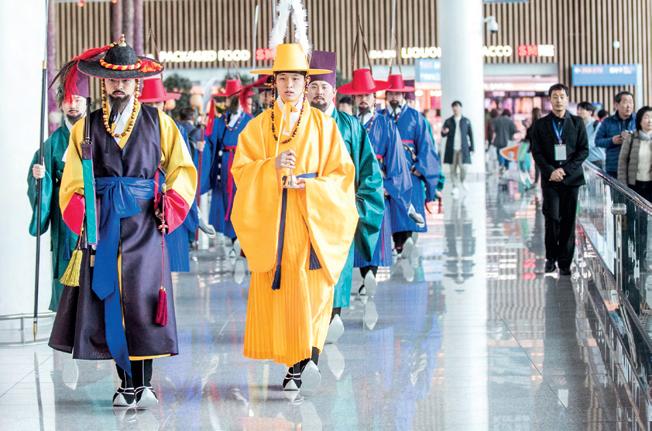
ICF’s Lewis Burroughs and Rob Rushmer look to the future and consider how the transition to electric and autonomous vehicles could impact on existing drop off and car parking infrastructure at airports.
China’s re-opening to international travel is likely to be more of a slow burner than a game changer for the aviation industry, writes OAG’s chief analyst, John Grant.
A host of new carbon reducing initiatives, renewable energy plans and more show that sustainable development continues to be a top priority for the region’s airports, writes Joe Bates.
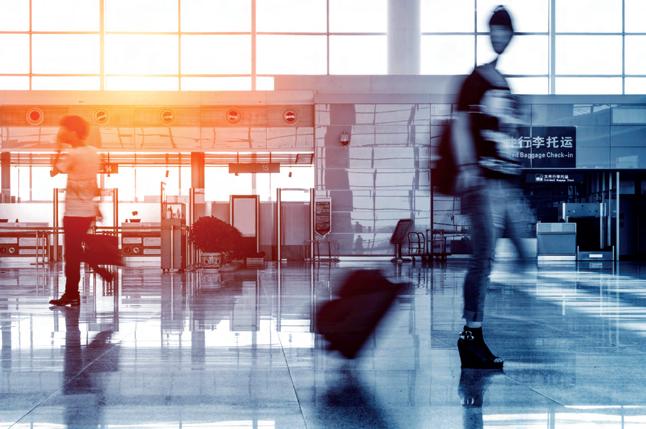
Virtual queuing is coming to an airport near you soon and could represent the future of waiting at airports, writes Steve Covate.
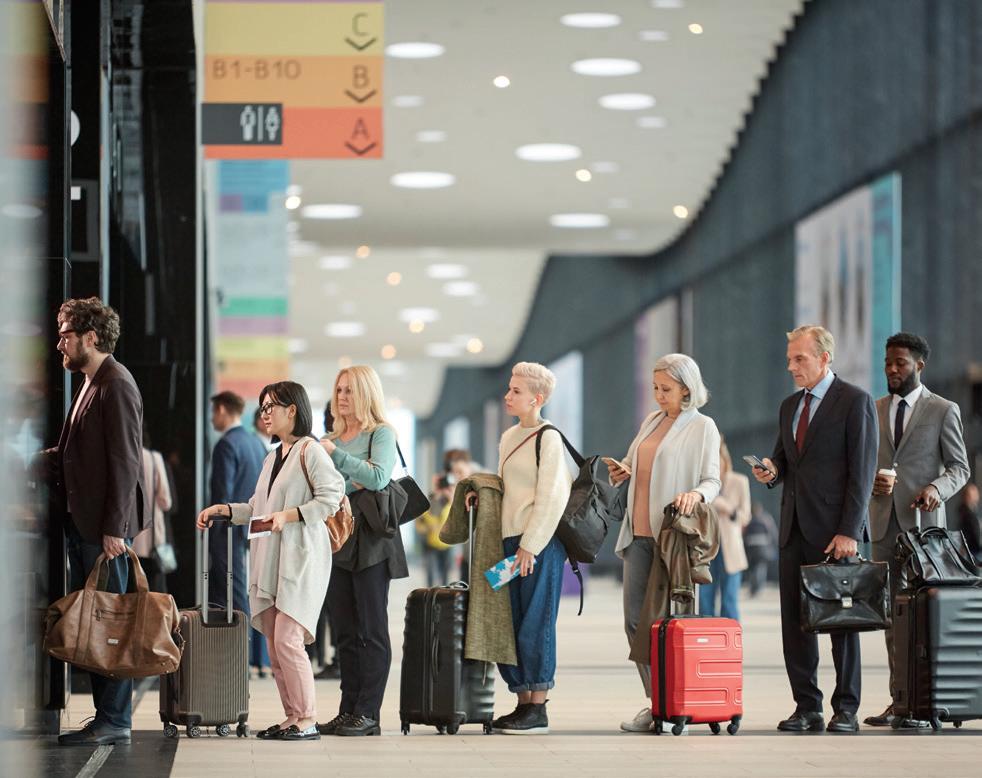
The latest news and views from ACI Asia-Pacific’s World Business Partners.
ACI Asia-Pacific is proud to be the voice of airport operators in two of the fastestgrowing regions of the world, Asia-Pacific and the Middle East.
Our team of professionals work tirelessly to serve and lead airports in the region with a vision to shape the future of the aviation industry.
Based in Hong Kong SAR, ACI Asia-Pacific is one of five regions of the only global airport trade organisation, Airports Council International (ACI) World.
In 2021, ACI Asia-Pacific and Middle East airports collectively handled 1.6 billion passengers and 55.6 million tonnes of cargo.
key facts:





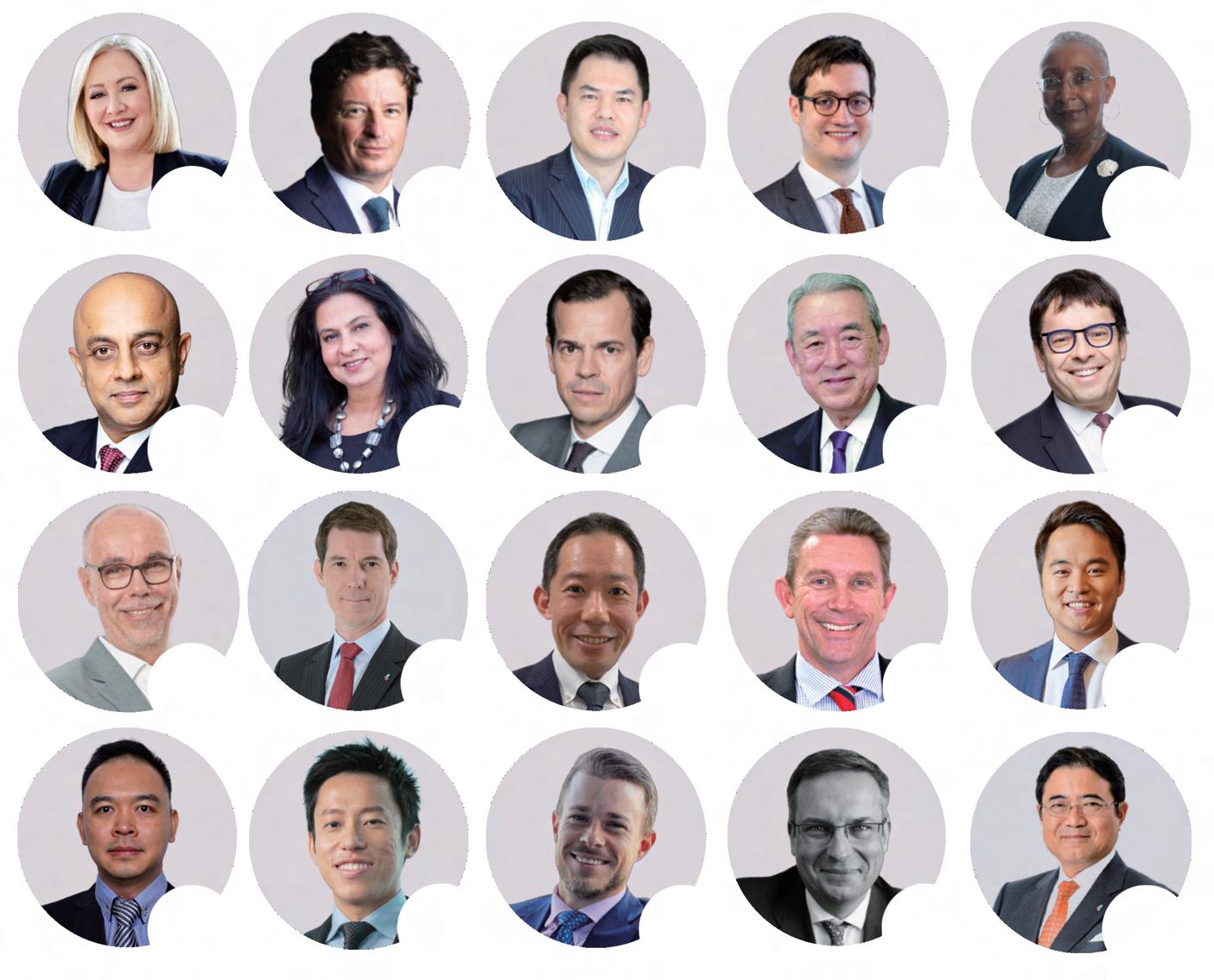
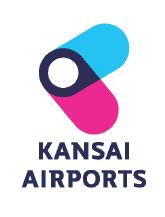










Director general, Stefano Baronci, reflects on the latest traffic trends, the association’s ongoing advocacy efforts and looks forward to the upcoming ACI Asia-Pacific Regional Assembly, Conference and Exhibition in Kobe.

It might sound dramatic, but I strongly believe that this year heralds a new dawn for the aviation and tourism industry.
After having remained shut for nearly three years, China – the world’s biggest aviation market – has re-opened its borders to international travellers. This is a significant milestone for the aviation industry in the region as it looks to regain the dominant market position it enjoyed from 2012 up until the global pandemic.
The prolonged closure of China’s borders and travel restrictions and limitations in Japan and Hong Kong certainly hindered Asia-Pacific’s traffic recovery in 2022, ACI’s soon to be released annual traffic figures likely to show that the region’s airports handled 1.7 billion passengers last year.
If confirmed, the total will mean that passenger numbers in the Asia-Pacific region reached 51.4% of 2019’s 3.4 billion passengers in 2022.
This would mean that the previously dominant Asia-Pacific region is likely to fall behind Europe and North America in terms of global market share as provisional figures indicate that they handled 1.9 billion and 1.8 billion passengers respectively in 2022. The last time Asia-Pacific recorded a similar level of traffic to 2022 was in 2011.
We remain confident that the current situation is just a temporary setback, however, as ACI’s long-term forecast indicates that passenger traffic in Asia-Pacific, along with the Middle East, is expected to grow faster than other regions until 2041.
Indeed, the projected annual growth rate of 4.5% and 4.7% for Asia-Pacific and the Middle East respectively compares favourably against the forecast compound annual growth rate of 2.6% in Europe and 2.2% in North America, against the baseline of 2019 traffic.
In the long-term, Asia-Pacific will account for four of the top five nations in the world in terms of civil aviation markets, with China leading the way, followed by India, Indonesia, and Japan.
Among the fastest growing global markets, five are located in Asia (Indonesia, India, Vietnam, the Philippines and China). Perhaps the greatest example of the potential of Asia-Pacific is the fact that the region is predicted to host 45% of global traffic in 2041.
Coming back to today, we expect China’s re-opening to signify the beginning of a strong traffic recovery across the Asia-Pacific region as it accounts for almost onequarter (23%) of all inbound travellers.
It’s also worth noting that Chinese travellers were the largest international spenders in 2019, accounting for $120 billion of the global international spending of $500 billion.
These facts show just how important China and Chinese passengers are to the recovery and future health and prosperity of airports across the Asia-Pacific region, especially those that are dependant on China for a significant portion of their inbound international travellers.
Going forward, tourism-reliant nations in Southeast Asia will likely be among the first to witness an upward movement in traffic, with developed economies also benefitting from the return of Chinese visitors.
As a result, Asia-Pacific is expected to return to 2019 traffic levels by 2024 and the Middle East by end of 2023.
Another encouraging indicator for the region is that over a dozen countries that imposed travel restrictions following China’s re-opening have gradually lifted the restrictions, allowing total freedom of travel.
Our advocacy remains strong as our policy teams continue to work more closely with stakeholders and the aviation community in the journey towards recovery and rebuilding.
In various ICAO meetings, for example, we reaffirmed our call for One-Stop Security and promoted APEX in Security. We also presented a number of proposals that might assist airports in improving their readiness for future health emergencies, such as the implementation of globally acknowledged digital health credentials and the use of a balanced approach when adding extra health precautions at airports.
In addition, we also launched two new safety guideline handbooks. The Guidelines on Operations Under Lightning is designed to help members establish protocols to determine when to scale down or suspend aerodrome operations during a thunderstorm and safely resume operations afterwards.
While the Guidelines on Manning Requirements for Aerodrome Operations provides a framework to estimate manning requirements for aerodrome operations.
Our members’ enthusiasm for ACI’s Airport Carbon Accreditation (ACA) programme has been amazing. According to the latest ACA Annual Report May 2021 to May 2022, a total of 64 airports in Asia-Pacific and the Middle East have contributed to the reduction of 162,623 tonnes of carbon reduction (Scope 1 & 2) across their facilities in the year ending May 2022. As on date, we have 66 airports from the region accredited under ACA programme.
ACI Asia-Pacific is working with governments and national authorities to encourage airports to pursue decarbonisation. In fact, during our recent visit to India, we had a dialogue with Government of India to increase the participation of airports in the ACI ACA programme.
With the complete re-opening of international borders, business is now back to normal. Our engagements and advocacy will continue to increase, as will our events and services.
We are currently preparing for a series of events in 2023, beginning with our ACI Asia-Pacific Regional Assembly, Conference and Exhibition in Kobe, Japan (May, 16-18), followed by the launch of our sub-regional office for the Middle East in Riyadh, and Airports Innovate conference in Muscat towards the end of the year (November 21-22).
I would like to take this opportunity to invite you to attend the ACI Asia-Pacific Regional Assembly, Conference and Exhibition in Kobe. We’ve put together an exciting line-up of speakers, including industry pioneers with a lot of experience.
We look forward to meeting you in Kobe! APA
We provide a snapshot of some of the latest news stories from across Asia-Pacific and the Middle East.
Hyderabad’s Rajiv Gandhi International Airport and Amman’s Queen Alia International Airport recently celebrated milestone events, the Indian gateway turning 15 years old and the Jordanian gateway toasting the 10th anniversary of its Terminal Building.
Hyderabad (pictured above) was India’s first greenfield airport to open under the Public-Private Partnership in 2008 and was recently adjudged Best Airport by Size in Asia-Pacific in the 15-25mppa category in ACI’s Airport Service Quality (ASQ) Awards for 2022.
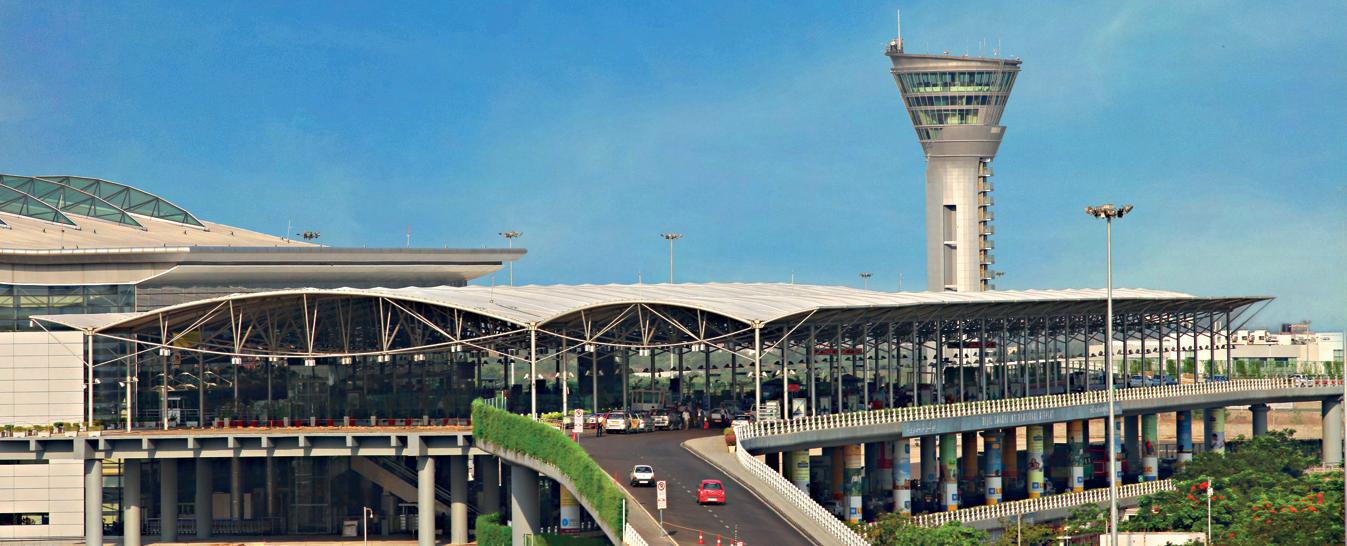
Operator, GMR Hyderabad International Airport (GHIAL) simply described the anniversary as “Fifteen years of connecting the world with excellence and innovation”.
Talking about the 10th anniversary of Queen Alia’s Terminal Building, Airport International Group’s CEO, Nicolas Claude, stated that the $750 million investment had proved pivotal to the gateway’s traffic growth and ASQ success over the past decade.
“Through a successful PPP, we, alongside our grantor, employees and partners, have worked tirelessly to create an airport experience that reflects the best of our community and showcases our commitment to hospitality,” said Claude.
“As we look ahead, we remain dedicated to enhancing our airport’s offerings and ensuring that every passenger travelling through Jordan’s prime gateway to the world feels welcomed and at home.”
The future ambitions of Adani Airports include the possible expansion of its Indian airport network and eventually becoming the leading airport operator in the country.
In the last round of airport privatisations in India, Adani Airports won bids to operate six airports – Guwahati, Ahmedabad, Jaipur, Lucknow, Thiruvananthapuram and Mangaluru.
Going forward, the Indian government has identified a total of 25 airports for potential privatisation with about a dozen of them expected to happen in the next few years. Arun Bansal, CEO of Adani Airport Holdings, says the group will participate in the bidding.
Speaking on the on sidelines of an aviation summit hosted by CAPA India in New Delhi in mid-March 2023, Bansal said: “We need to see the conditions of the request for quotation (RFQ), we need to see how the tariff will be applied and we
will need to see how the CAPEX will be applied. And only if it makes financial sense, will we put in a bid.”
In the next round of airport privatisation the Indian government is expected to pair smaller airports with larger, more profitable ones, believing the strategy to be the best way to develop the country’s secondary regional gateways.
According to Adani, annual traffic numbers across India could rise to nearly one billion passengers per annum by 2040, with passenger traffic growing at a CAGR of 8.5% over the next 20 years.
“The growth will not only be at the airports in Delhi or Mumbai or Kolkata or Bengaluru, but it will also be at regional airports,” said Bansal, noting that expansion of the company’s airport network could conceivably see it handling 350 million passengers annually in the next ten years.
Brisbane Airport is literally brewing up employment opportunities for people with a disability at its new Boronia Brew café.
Indeed, to date, 10 staff with a disability have found employment at Boronia Brew, which officially opened earlier this year.
Operated by HELP Enterprises, the social enterprise is providing training for supported workers, with hopes some will go on to find employment at businesses across the rapidly expanding Brisbane Airport precinct.
The coffee shop is one of Brisbane Airport’s largest, located in the Da Vinci aviation training precinct filled with people upgrading their skills at Aviation Australia, Qantas, Virgin Australia, LifeFlight Training Academy, QUT and Cabin Services Australia.
Brisbane Airport Corporation invited HELP to fill a hospitality void in the southern airport precinct.
“We were really looking for an operator with heart to bring great coffee and great food to our training precinct to build our airport community, and we are incredibly happy to work with HELP to provide opportunities for supported workers,” enthused Gert-Jan de Graaff, CEO of Brisbane Airport Corporation.
Every day 24,000 people come to work across the Brisbane Airport precinct, with that number expected to grow by 10,000 by the time the Brisbane 2032 Olympic and Paralympic Games begin.
“If this café can help train some of the future employees who go on to work in hospitality across Brisbane Airport, we will be delighted,” adds de Graaff.

Auckland Airport is to commence the biggest development programme since it opened in 1966 with a brand-new domestic terminal, which will be fully integrated into the international terminal.
The NZ$2.2 billion terminal integration programme –a significant part of the airport’s wider 10-year-capital programme – will bring domestic travel and international travel together under the same roof for the first time since 1977, via an expansion at the eastern end of the existing international terminal building.
The integration programme is also an important enabler in allowing the New Zealand gateway to carry out key upgrades on the airfield to ensure the airport remains resilient.
Chief executive, Carrie Hurihanganui, enthused: “This is all about building the gateway Auckland and New Zealand need.
“A new domestic terminal integrated into the international terminal will make Auckland Airport fit for the future, providing a much-improved experience for travellers – something they’ve clearly and repeatedly told us they want.
“They’re asking for a domestic facility that offers modern spaces, efficient passenger processing areas, improved bathroom facilities and faster baggage systems, as well as better connections between domestic and international travel and via public transport and the city. In short, renovations just won’t cut it anymore.”
Set to open between 2028 and 2029, the combined terminal will serve the larger and more efficient domestic jet aircraft flying to and from Auckland to New Zealand’s other main centres, alongside international operations.
Upon inspecting the construction site, the Indian state of Uttar Pradesh’s chief secretary, Durga Shankar Mishra, has announced that he expects Delhi’s much anticipated Noida International Airport to open in September 2024.
Being developed in phases, the airport is set to have an initial capacity of 12 million passengers per annum upon opening, rising to 30mppa by 2030 and eventually up to 70 million by 2040.
It will also arguably be one of India’s greenest airports when it opens as it is being designed as a ‘net-zero emissions airport’.

Singapore Changi and Brussels Airport have signed a Memorandum of Understanding (MoU) to augment their strategic partnership in air cargo development.
With the goal of deepening cargo competencies, it is said that both airports will jointly drive initiatives to enhance their respective capabilities in pharmaceutical logistics, undertake studies and trials in the fields of digitalisation and sustainability, and exchange best practices.
The MoU was signed by Geert Aerts, chief cargo and real estate officer of Brussels Airport Company (BAC), and Lim Ching Kiat, executive vice president for air hub and cargo development at Changi Airport Group (CAG).
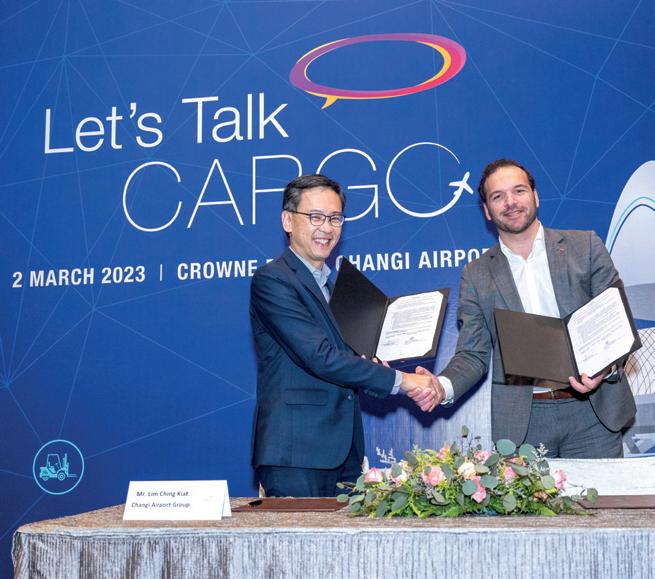
Lim noted: “The industry has witnessed how the COVID-19 pandemic has transformed the air cargo supply chain. More than ever, handling capabilities are key to the competitiveness of the air cargo ecosystem.
“As CAG pushes forward with our digitalisation efforts to enhance Changi Airport’s air cargo processes for higher handling efficiency, we look forward to exchanging insights and learning from Brussels Airport and Air Cargo Belgium.”
Xinjiang in north west China has a new high altitude airport following the opening of Tashikuergan Hongqilafu Airport late last year.
Located 10,690ft above sea level in Tashikuergan County, the $200 million plus new addition to China’s aviation infrastructure is Xinjiang’s first high plateau airport and 25th civilian gateway.
It will be served by China Southern Airlines operating A319 flights to Urumqi – the capital city of Xinjiang,
which previously took over a day to get to by road –from where passengers can catch onward connections to Beijing, Shanghai, Guangzhou, Chongqing and other major Chinese cities.
Tashikuergan Hongqilafu Airport, is equipped to handle up to 160,000 passengers, nearly 2,000 aircraft movements and 400 tonnes of freight per annum.
Tashikuergan County is close to the borders of Tajikistan, Afghanistan and Pakistan, making the airport the most western in China in terms of its location.
THE GLOBAL AIRPORT COMMERCIAL REVENUES CONFERENCE
25 & 26 OCTOBER
Hosted by Organised by
Manager for communications and brand marketing, Yuman Lau, rounds-up the latest news and developments from ACI Asia-Pacific.
ACI Asia-Pacific participated at the 9th Annual Technical and Operational Meeting (ATOM) of the Cooperative Aviation Security Programme – Asia Pacific (CASP-AP) in Singapore in early February 2023.
The event, hosted by the Civil Aviation Authority of Singapore (CAAS), is a regional ICAO programme designed to provide technical assistance to Asia-Pacific States looking to enhance security at their airports.
Attended by over 30 representatives from a host of States and industry associations, the two-day meeting
addressed some of the training and capacity building initiatives in aviation security and the priority areas that the CAS-AP should focus on in the coming year.
Gary Leung, ACI Asia-Pacific’s manager for security and facilitation, was invited to give a presentation on the ACI APEX in Security programme.
At the meeting, ACI Asia-Pacific reiterated the importance of OSS to the sustainability of the civil aviation industry, and encouraged States to share challenges and difficulties in implementation at future MID-RASFG meetings.

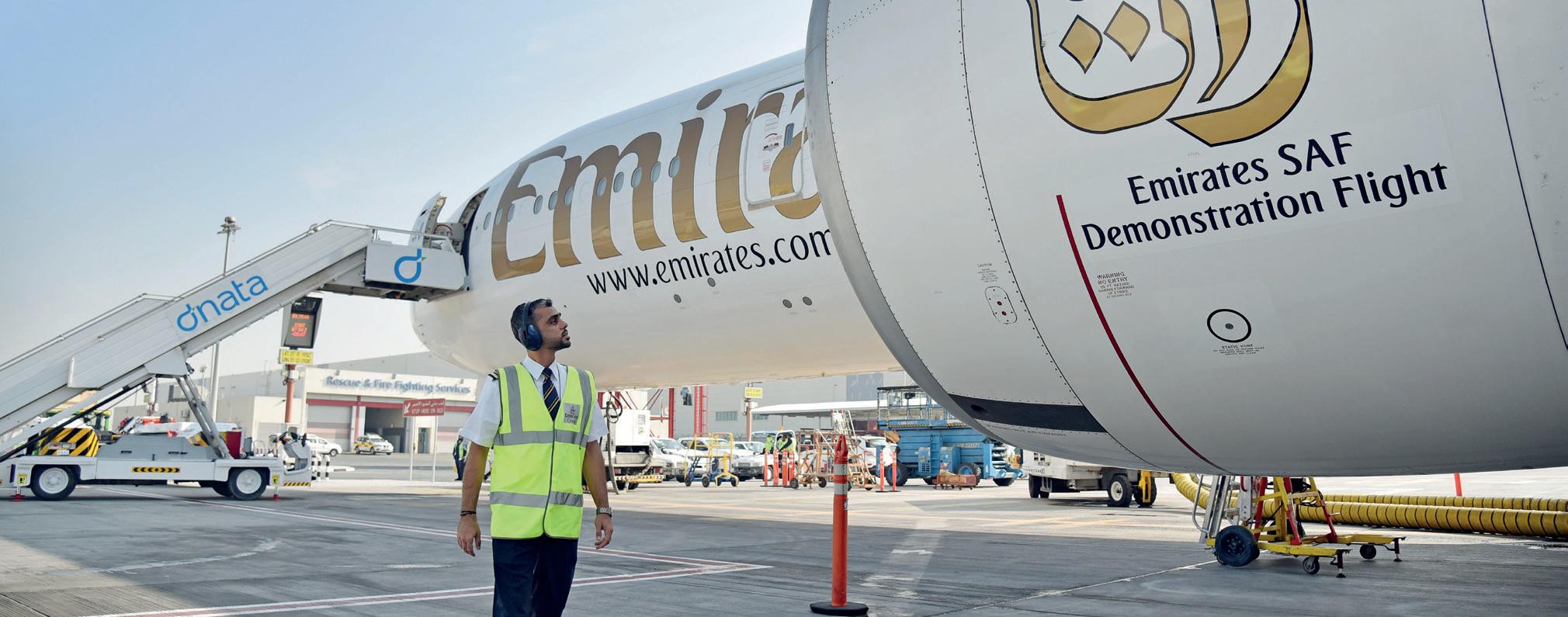
In February, ACI Asia-Pacific participated in a series of Sustainable Aviation Fuels (SAF) Webinars organised by the European Union Aviation Safety Agency (EASA).
The webinars aimed at exchanging insights on the scale up of SAF in South East Asia, and to facilitate establishing partnerships among interested parties. More than 120 participants from all ASEAN members joined the the sessions.
Ken Lau, our senior manager for the environment and IT, provided an overview of ACI Asia-Pacific’s advocacy on airport environmental and sustainability issues, highlighting the ongoing decarbonisation efforts of airports.
Together with ACI Asia-Pacific, Takahiro Ohmiya, manager of the business group of the refuelling business for Narita International Airport Corporation, shared his experiences on how governments and the aviation industry can work closely together to increase SAF supplies to airports.

PRESIDENT Emmanuel Menanteau* (Cambodia Airports, Cambodia)
H.E. Ali Salim Al Midfa (Sharjah Airport Authority, UAE)
SECRETARY TREASURER
Mohamed Yousif Al-Binfalah*
(Bahrain Airport Company SPC, Bahrain)
Members of the ACI Asia-Pacific Regional Environment Committee and environmental sustainability experts from airport across the globe shared their knowledge and insight during ACI Asia-Pacific’s ‘Airports Going Beyond Green Building’ webinar earlier this year.
The webinar aimed to promote environmental best practices to help airports minimise the impact of their facilities and aviation on the environment, potentially building more resilient and sustainable airports for future.
Gerald Ng, Changi Airport Group’s vice president for the environment and sustainability and S. Lakshminarayanan, senior vice president of engineering and maintenance at Bangalore International Airport Limited (BIAL), were the keynote speakers with the event moderated by Ken Lau, ACI Asia-Pacific’s senior manager for the environment and airport IT.
Participants shared best practice advice on topics ranging from environmental management and commissioning, maintenance and operational challenges to formulating long-term plans.
The ACI Asia-Pacific Regional Environment Committee is under new leadership this year following the appointment of Changi Airport Group’s Gerald Ng and Airport Authority Hong Kong’s Kristy Tan as chair and vice chair respectively for 2023-2024.
Singapore based Ng is CAG’s vice president for the environment and sustainability and Tan is AAHK’s senior manager for climate resilience, and both have been busy since taking up their roles, Ng making a keynote speech at ACI Asia-Pacific’s Airports Going Beyond Green Building webinar and Tan speaking at a meeting of the European Aviation Climate Change Adaptation Working Group earlier this year.
FIRST VICE PRESIDENT
SGK Kishore*
(GMR Hyderabad International Airport Limited, India)
Geoff Culbert * (Sydney Airport, Australia)
Seow Hiang Lee*
(Changi Airport Group Pte Ltd, Singapore)
Lorie Argus (Australia Pacific Airports Corporation, Australia)
Muhammad Awaluddin (PT Angakasa Pura II, Indonesia)
Nicolas Claude (Airport International Group, Jordan)
Gert-Jan de Graaff (Brisbane Airport Corporation PTY Limited, Australia)
Videh Kumar Jaipuriar (Delhi International Airport Ltd, India)
Cheok Kuan Kan (Macau International Airport Co Ltd., Macau SAR)
Kyung Wook Kim (Incheon International Airport Corporation, Korea)
Fred Lam**
(Airport Authority Hong Kong, Hong Kong SAR)
Suleiman Al Bassam (General Authority of Civil Aviation, Saudi Arabia)
Sheikh Aimen bin Ahmad Al Hosni*
(Oman Airports Management Company, Oman)
Tan Sri Bashir Ahmed
Abdul Majid
(GMR Airports Limited, India)
Dato’ Iskandar Mizal Mahmood (Malaysia Airports Holdings Berhad, Malaysia)
Yun Qin (Shanghai Airport Authority, China)
Jean-Michel Ratron (Aeroport de Tahiti, French Polynesia)
Nitinai Sirismatthakarn* (Airports of Thailand Public Co Ltd, Thailand)
Akihiko Tamura* (Narita International Airport Corporation, Japan)
Chang Yi Wang (Capital Airports Holding Company, China)
Yoshiyuki Yamaya (Kansai Airports, Japan)
Hyung Jung Yoon (Korea Airports Corporation, Korea)
WBP REPRESENTATIVE
Greg Fordham
(Airbiz Aviation Strategies Pty Ltd, Australia)
* WGB member **Regional Advisor on WGB
Between them, 64 airports from Asia-Pacific and the Middle East have reduced their carbon emissions by 162,623 tonnes (Scope 1 & 2), according to ACI’s Airport Carbon Accreditation Annual Report for 2021-2022.
This is equivalent to the CO2 emitted during the production of close to 24 million cotton t-shirts.
ACI Asia-Pacific’s director general, Stefano Baronci, noted: “There have been significant efforts to reduce the carbon footprint at airports, but the emissions levels will still increase due to a lack of clear solutions to decarbonise the industry and surging demand for air travel.
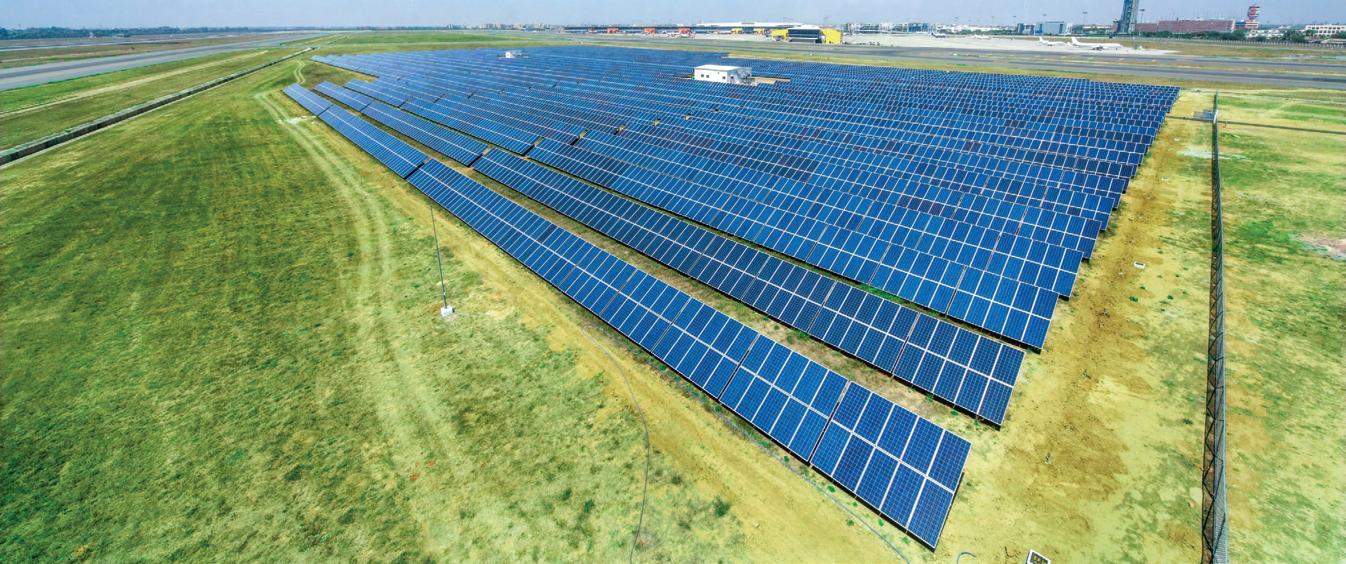
“The ACA programme is a great tool to encourage and enable airports to implement best practices in carbon management and achieve emissions reductions.
“The coming years will be more challenging as Asia-Pacific and Middle East traffic is expected to collectively grow by 2.6 times until 2041 from 2019 level of 3.4 billion.
“Airports are already doing good work in decarbonisation, but are expected to scale up their efforts to reach net zero goals by 2050. We look forward to see more airports join ACA and progressively make it to the top tier of the programme.”
Sixteen airports from Asia-Pacific and the Middle East upgraded to a higher level of accreditation within the reporting period.
They are Bahrain (BAH); Chengdu Shuangliu (CTU); Christchurch (CHC); Hawke’s Bay (NPE); Delhi-Indira Gandhi (DEL); Kansai (KIX); Kobe (UKB); Osaka (ITM); Palmerston North (PMR); Perth (PER); Phnom Penh (PNH); Queen Alia (AMM); Salalah (SLL); Siem Reap (REP); Sihanouk (KOS); and Shenzhen Bao’an (SZX).
Airport Carbon Accreditation is the only institutionally-endorsed, global carbon management certification programme for airports. It independently assesses and recognises the efforts of airports to manage and reduce their carbon emissions through 6 levels of certification: ‘Mapping’, ‘Reduction’, ‘Optimisation’, ‘Neutrality’, ‘Transformation’ and ‘Transition’.
Through its 6 levels of certification, Airport Carbon Accreditation acknowledges that airports are at different stages in their journey towards comprehensive carbon management. It is a programme for airports of all sizes, extending beyond hubs and regional airports with scheduled passenger traffic, to include general aviation and freight-focused airports.
Find the full list of accredited airports and more information about the programme here: www.airportcarbonaccreditation.org/
ACI Asia-Pacific has participated in the first European Aviation Climate Change Adaptation Working Group of 2023, effectively a gathering of experts in the fields of environment, climate change and technical operations at airports.
At the meeting, the participants engaged in a knowledge exchange session about the latest development of ACI Asia-Pacific’s advocacy effortd in aviation sustainability.
On behalf of ACI Asia-Pacific, Kristy Tan, vice-chair of the ACI Asia-Pacific Regional Environment Committee (REC) presented the process and good practices of the committee and airports with regards to the development of climate resilience within the industry.
The latest Tender Guideline for Climate Resilience & Planning, published by ACI Asia-Pacific, was presented during the meeting.
ACI Asia-Pacific director general, Stefano Baronci, had a productive meeting with the India’s Minister for Civil Aviation, Jyotiraditya Scindia, at his office in New Delhi in March, 2023.

ACI Asia-Pacific will co-operate with the Indian Ministry to try and significantly increase the number of Indian airports to achieve carbon neutrality as well as assist them in their efforts to meet environmental targets.
Environmental best practice is, of course, already high on the agenda of a number of Indian airport operators such as Delhi International Airport Ltd (DIAL); Mumbai International Airport Limited (MIAL); Bangalore International Airport Ltd (BIAL); and GMR Hyderabad International Airport Ltd (GHIAL).
We look forward to working closely with MOCA and the Honourable Minister’s team for a larger participation of Indian airports in the Airport Carbon Accreditation programme in the near future.
Bahrain Airport Company recently played host to the joint ICAO Europe and Middle East Tenth Collaborative Arrangement for the Prevention and Management of Public Health Events in Civil Aviation (CAPSCA EUR-MID/10).
In collaboration with the Civil Aviation Authority of Bahrain, the meeting was attended by over 60 medical and civil aviation professionals from many different States and industry associations from Europe and the Middle East.
ACI Asia-Pacific provided an overview of ACI’s initiatives in public health introduced over the past three years, such as the Airport Health Accreditation (AHA) programme and its health-related guidance documents, aimed at helping airports better implement ICAO recommended health measures during the pandemic.
Nagy Abu Zeid, vice president corporate planning for Oman Airports, has been re-elected as the chair of the ACI Asia-Pacific Economics Committee for a second term.
He will work closely with François Southarewsky, chief commercial officer for Aero Kansai Airports, who was unanimously elected a vice chair during the Economics Committee’s 18th committee meeting in Riyadh, Kingdom of Saudi Arabia, in late 2022.
Zeid and Southarewsky will lead the Committee for two years, with the term beginning from February 2023.
A number of recommendations that could help airports enhance their preparedness for future health crises were also put forward at the meeting, including the introduction of universally accepted digital health credentials and to adopt a balanced approach when implementing additional health measures at airports, if required, to minimise unnecessary interference on operations.
Established in 2006, CAPSCA is a programme managed by ICAO that brings together stakeholders from the civil aviation sector and public health sector to improve preparedness planning and response to public health events that affect civil aviation.
A number of lessons learned from COVID-19 were shared during the three-day meeting, such as the various control measures taken by the aviation ecosystem to prevent the spread of the virus and their impact on aviation, economies and societies in general.
Our global aviation conference Airports Innovate will take place in Muscat, Oman, on November, 21/22, 2023. The event is co-organised by ACI Asia-Pacific, ACI EUROPE, ACI World and hosted by Oman Airports. We are now calling for potential exhibitors and sponsors to participate in our flagship event. If you are looking for opportunities to showcase your products and solutions to the market and explore collaborations, here is your opportunity. Mark your calendars now!

CAN YOU TELL OUR READERS A LITTLE MORE ABOUT YOUR JAPANESE AIRPORT NETWORK?
In Osaka, we operate Kansai International Airport (KIX) and Osaka Itami Airport (ITM), and we are also responsible for managing and developing Kobe Airport (UKB) in Kobe city, the capital of Hyōgo Prefecture.
We assumed responsibility for operating KIX and ITM in April 2016 and added Kobe Airport to our global airport portfolio in April 2018. Under the terms of our concession agreement with the Japanese Ministry of Land, Infrastructure, Transport and Tourism (MLIT) and Kobe city respectively, we will operate all three airports until March 2060. All three airports serve different markets.
KIX is the only international airport of the three and the undisputed international gateway for the region. Most international passengers to the Kansai region – the area comprises six prefectures and in Osaka, Kobe and Kyoto boasts the second most populated metropolitan region in Japan after the Greater Tokyo Area – fly in and out of Kansai International Airport. Foreign nationals acount for 70% of all inbound travellers on international flights. KIX is very much an O&D gateway with less than 2% of passengers catching a connecting flight.
ITM is essentially the large domestic airport of Osaka. A total of 35 Japanese destinations are served from the airport, with business passengers accounting for the bulk of the traffic on weekdays and more tourists being handled at weekends.
UKB is a local domestic airport with 40 daily departures. It is also home to a flying school, firefighting helicopters and an industrial base for helicopters.
I am proud to note that KIX and ITM were the first airport concession deals in Japan and showed the world that VINCI Airports had the capacity to develop the PPP model in new geographies. In this regard, our alliance with ORIX – our Japanese investment partner – has proven hugely successful. VINCI Airports is a long-term partner of Japan, with strong local roots.
WHAT WAS THE APPEAL OF KOBE AIRPORT AS IT SEEMS VERY MUCH LIKE THE LITTLE BROTHER OF OSAKA’S AIRPORTS?
In size and facilities it definitely is, its single terminal and runway handle around 3.3 million passengers per annum compared to the 31.9 million and 16.5 million handled at KIX and ITM respectively pre-COVID.
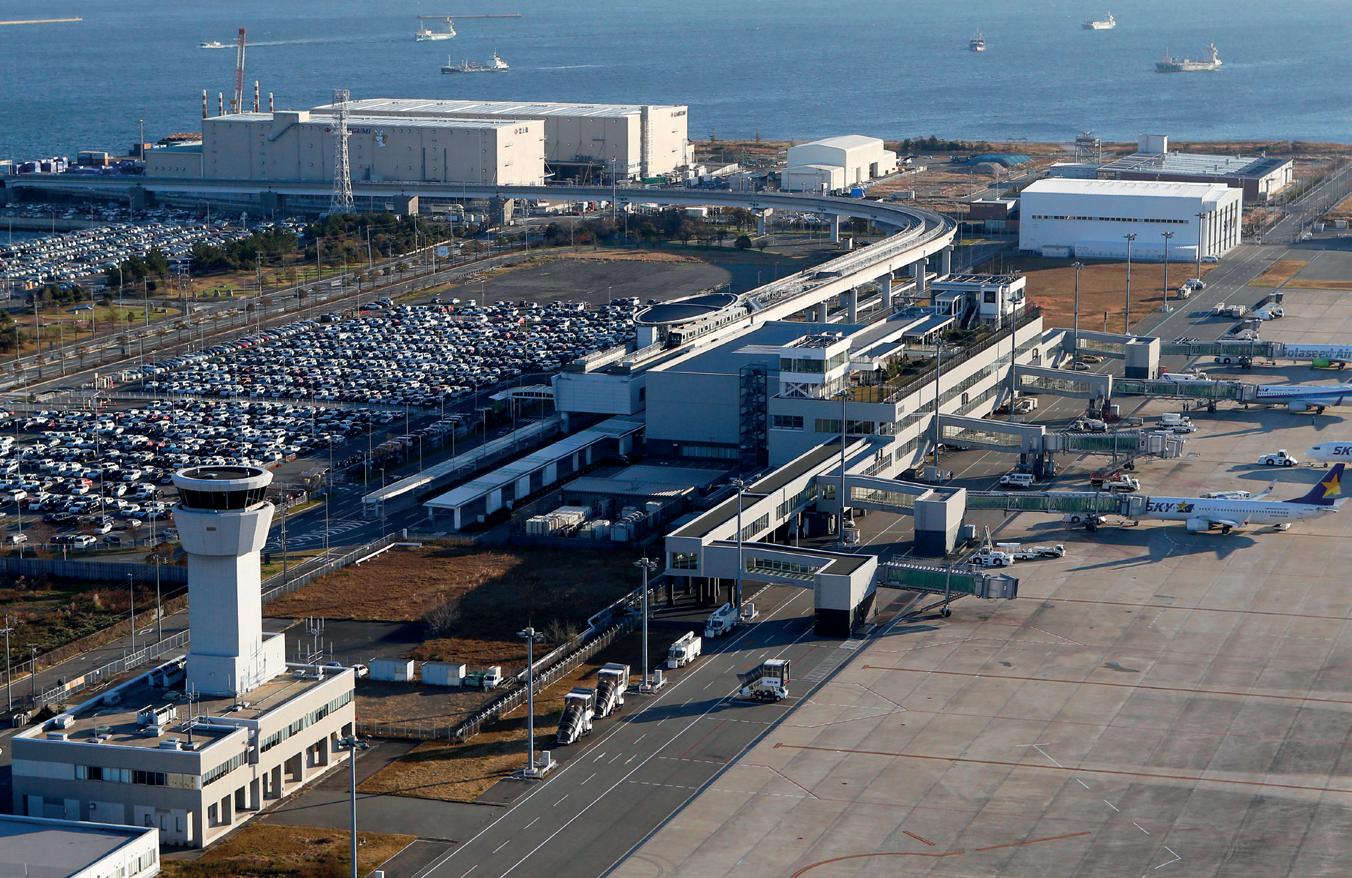
However, we feel that it has potential for future growth and that its development would be best served by being part of our network where all the airports in the Kansai region are under the same management, and operate as a team for the benefit of all. Airports in a metropolitan area should always work together, and when they are operated by one company, you can ensure that their respective policies and strategies are aligned to support their mutual development.
Kobe is both a tourist destination and an important economic area for heavy industries, pharmaceutical, fashion and design, confectionery and sake. The city relies on aviation for both touristic and economic mobility and VINCI Airports is committed to supporting regional growth through enhancing UKB’s facilities and services.

We have invested money in enhancing the energy efficiency of the terminal building, improved the check-in and security screening processes, increased the airport’s safety and disaster resilience, and renovated the runway.
In terms of potential future traffic growth, we managed to get approval to raise the number of air traffic movements handled at the airport from 60 to 80 per day. That might not seem a lot, but the demand was there, and as result traffic at UKB almost immediately increased to the new limit.
We now believe that there is demand for a little bit more. Going forward, we believe that a centre of excellence for helicopters around the existing industrial operations of Airbus Helicopters and Hirata Gakuen would make a lot of sense. UKB can become a base for medical and police helicopters as well as a training centre for pilots and technicians.
When it comes to helicopters, we have no doubt that UKB can also become a base for medical and police helicopters as well as a training centre for pilots and technicians.
In parallel to these plans, ever ambitious Kobe city would like to open up the airport to international traffic and greatly increase its handling capacity. They are preparing to invest in a new temporary terminal building in time for the Osaka-Kansai Expo in 2025, and want to build a new international terminal for 2030.
Kobe Airport is currently served by five airlines – Skymark, ANA, Air Do, Solaseed Air and Fuji Dream Airlines, which between them serve 13 destinations across Japan.
Our success in gaining approval to operate 40 departures a day instead of the previous 30 proved pivotal in attracting Fuji Dream Airlines to fly to UKB, and it now operates daily services to five cities (Aomori, Hanamaki, Kochi, Matsumoto and Niigati) from Kobe.
SO, DOES KOBE AIRPORT EFFECTIVELY FEED INTERNATIONAL OUTBOUND PASSENGERS TO TOKYO’S AIRPORTS?
International passengers can currently fly to either Tokyo’s Haneda or Narita airports from UKB with ANA and transfer onto an international flight or catch an onward connection with another airline. JAL doesn’t serve Kobe, but it does fly to KIX, as do many other international airlines, so most passengers flying internationally today will travel by road or rail to Osaka and fly from Kansai International Airport.
In general, the passengers that fly to Tokyo’s airports from Kobe or indeed KIX or ITM to catch a connecting international flight tend to be those that prefer to travel on a Japanese airline or work for businesses with strong ties with those airlines.
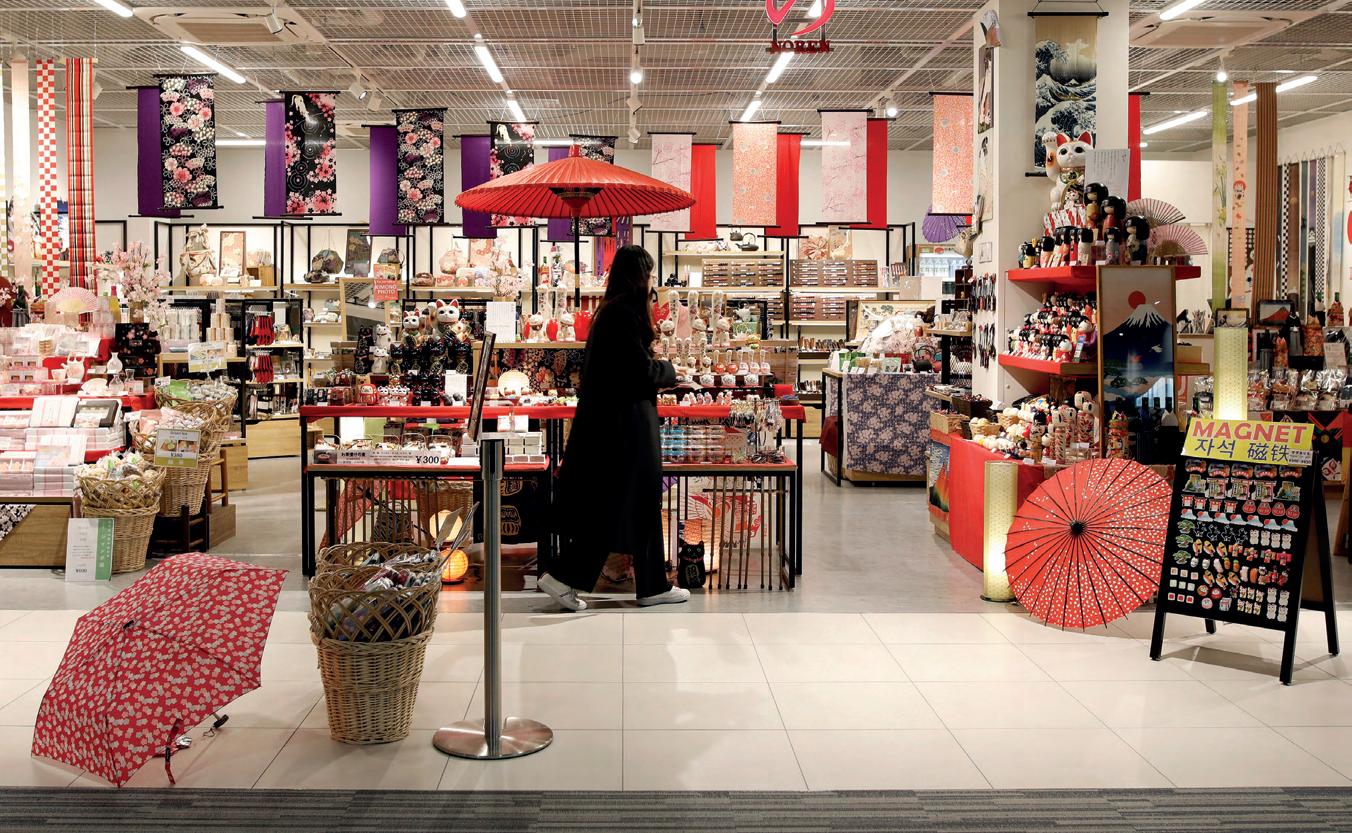
international capacity of the airport by actively working to attract more airlines and add more international routes.
Yes, the COVID pandemic proved a huge setback for these goals, but we are now in a good place again and are on the way to having 11 destinations in 2023 that we didn’t have in 2019. We also promote self-connection to boost our traffic, and keep pushing the development of cargo activities through initiatives such as a KIX Medica (a certification to process pharmaceutical products) and e-cargo (a digital tool shared among all cargo stakeholders).
At Osaka Itami, the main domestic airport for businessmen and leisure travellers alike, we would like to lift the 1,000 kilometre limit distance on flights, which would mean that airlines could launch non-stop flights to popular destinations in Japan such as Okinawa and Hokkaido.
CAN
ONE AIRPORT SYSTEM WORKS IN REALITY?
It’s quite simple really, Kansai Airports develops its strategy over the three platforms to ensure that we provide the best possible service to travellers and most opportunities to the airlines while making sure the total system is economically efficient.
Beyond the nominal operational matters, we also give much thought to how we can increase the resilience to natural disasters and other risks through multi-airport strategies.
As already mentioned, each airport has a clear role and function. KIX is, and will remain, the region’s international gateway and cargo hub. As a result, we are developing the
These routes are currently served by ANA and JAL from KIX, but it really doesn’t have to be this way anymore as the rule was enforced at KIX’s opening in 1994 to alleviate the noise pollution around Itami by limiting the number of B747s that were commonly flown toward Sapporo and Nara at that time. You cannot compare today’s aircraft to those of nearly 30 years ago. JAL’s eco-efficient A350 aircraft, for example, is said to be the quietest in its class with a reduced noise footprint of 50% on previous generation aircraft.
So, in our opinion, it is time to revise the 1,000 kilometre limit at ITM as, in addition to creating economic inefficiences, it is inconvenient and confusing for Osaka residents who might not want to fly from KIX.



In Kobe we want to develop a niche airport that will provide a good range of domestic destinations, a few short-haul international point-to-point destinations to generate additional traffic, and ancillary functions such as the business jet terminal and helicopter centre of excellence centre I’ve already mentioned. Urban Air Mobility (UAM) is also something we want to develop at UKB, particularly in relation to business jet users and helicopter operators.
The airport has obtained Level 4 ‘Transformation’ status in ACI’s Airport Carbon Accreditation programme, and has significantly reduced its energy consumption since 2018. We continue to look at new ways we can operate and develop the airport in a more sustainable fashion and lessen aviation’s impact on the environment.
Domestic traffic has evolved in line with our expectations. Traffic across all three airports has fluctuated with the different COVID waves, however, it is on an upward trajectory and we finished 2022 very close to 2019 levels. We are still missing a few business passengers at Osaka Itami, but we believe this is partly down to more passengers connecting in Tokyo while others have switched to e-meetings. We expect them to come back when international traffic fully resumes and COVID-19 is downgraded to a Category 5 disease in Japan in May.
It is a different story for international traffic, but you have to remember that Japan was effectively closed to international
travel until October 2022. Currently our international traffic is at about 40% of its pre-COVID levels, not helped by the fact that travel between Japan and China effectively remained closed until March 15, and the airlines are only now preparing to restart flights.
If we exclude China from the equation, we have recovered around 60% of our international destinations at KIX. And with Japan-China services on the verge of resumption, if it happens as we expect, international passenger traffic should continue to recover.
WOULD YOU CONSIDER EXPANDING YOUR JAPANESE PORTFOLIO WITH THE ADDITION OF OTHER AIRPORTS?
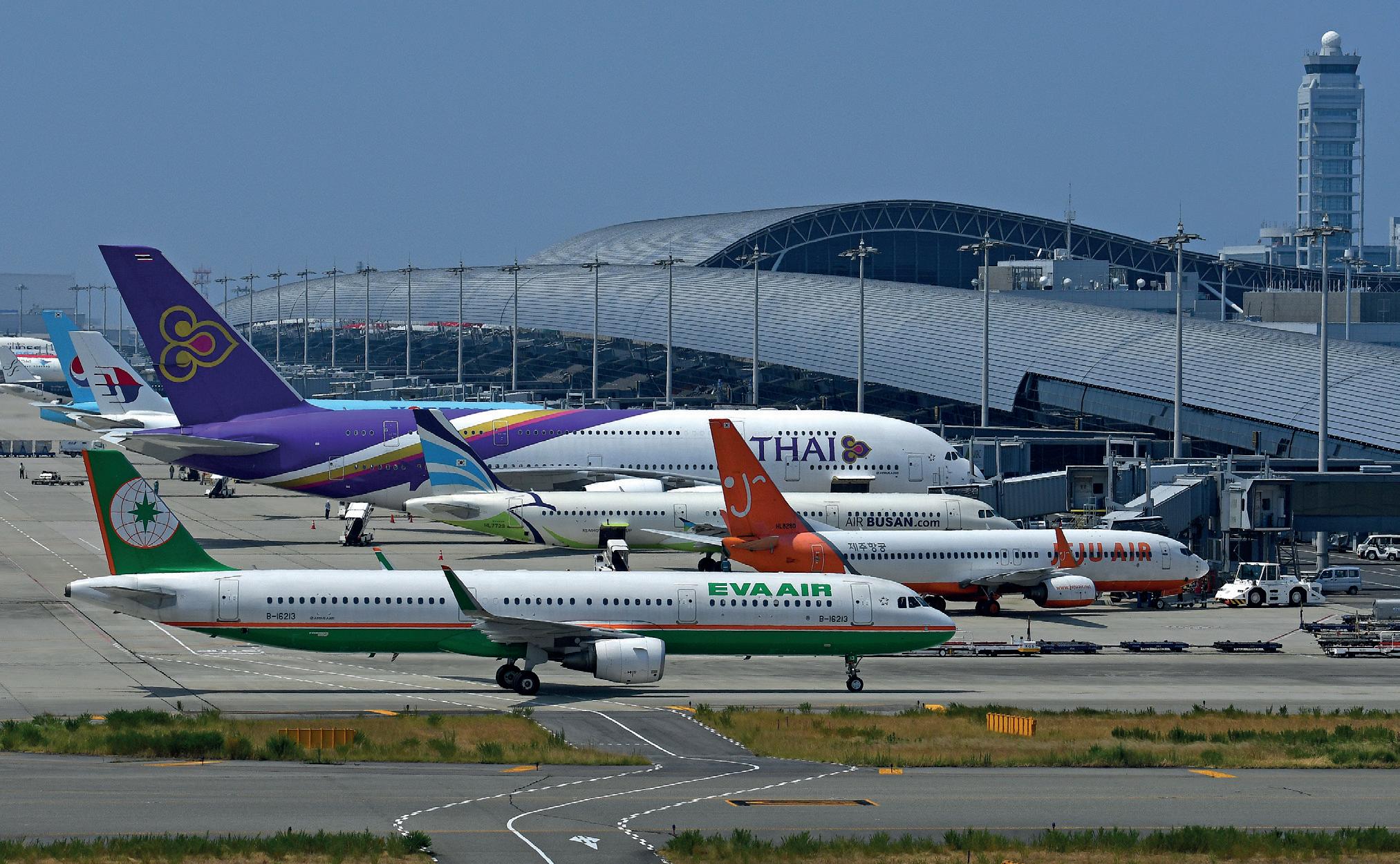
If another opportunity was to arise we would certainly consider it as our partnership with Japan is delivering positive results. Indeed, if the opportunity met our investment criteria we would be honoured to continue to support the Japanese government’s plan for tourism and business development through aviation.
WHAT DO YOU HOPE KOBE AIRPORT WILL GAIN BY HOSTING THE UPCOMING ACI ASIA-PACIFIC REGIONAL ASSEMBLY, CONFERENCE & EXHIBITION IN MAY?
The chance to showcase our airports and the Kansai region to the world. We are confident that delegates will enjoy their experience as the region offers a warm Japanese welcome, beautiful scenery, great food and Kansai dynamism. Visitors will also get a hint of what they expect at the Osaka–Kansai Expo, which is coming soon. From a personal perspective, I also hope that our airport delegates can help persuade their airlines to launch new routes to the Kansai region!”
The floorplan is subject to change without prior notice.
*Full Delegate Pass includes access to the 3 days of conference, exhibition and social networking events.


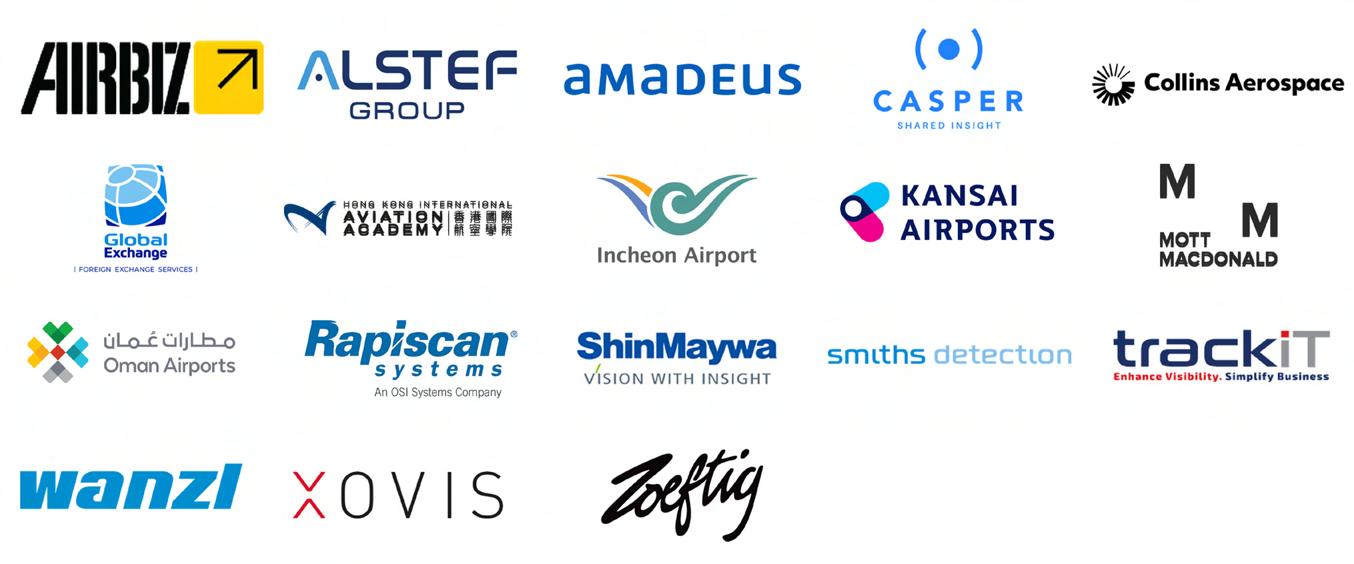


A total of 29 airports across Asia-Pacific and the Middle East have been recognised for their customer service excellence in ACI’s annual Airport Service Quality (ASQ) Awards for 2022.
Airports big and small across the world have been recognised for their customer service excellence throughout 2022 in ACI’s annual Airport Service Quality (ASQ) Awards.
Winners in the ACI Asia-Pacific region ranged from the big international hubs of Singapore Changi, Shanghai Pudong, Guangzhou Baiyun and Delhi’s Indira Gandhi International Airport to some of the world’s smaller gateways, such as Pattimura International Airport in Indonesia, and Tiruchirappalli International Airport in India.
Nine Indonesian airports were recognised in the ASQ Awards, with Sultan Hasanuddin International Airport (UPG) winning five of six categories.
Bali’s I Gusti Ngurah Rai Airport is among the five new airports to be inducted into the ACI World Director General’s Roll of Excellence. This honour is given to airports that have won multiple awards over a five-year period.
China (6 airports) India (6), Malaysia (2) and Oman (2) also performed exceptionally well in the 2022 ASQ programme.
The winners included Bengaluru’s Kempegowda International Airport which continued its success in the Best Airport at Arrivals Globally category, only this time it had to share the honour with Abu Dhabi International Airport and Hartsfield-Jackson Atlanta International Airport.
Kempegowda operator, BIAL, believes that factors such as its efficient deboarding procedures, streamlined immigration and customs processes, organised baggage claim services and the availability of infrastructure such as transit hotels and AI-powered assistance robots, ensure a smooth arrivals experience.
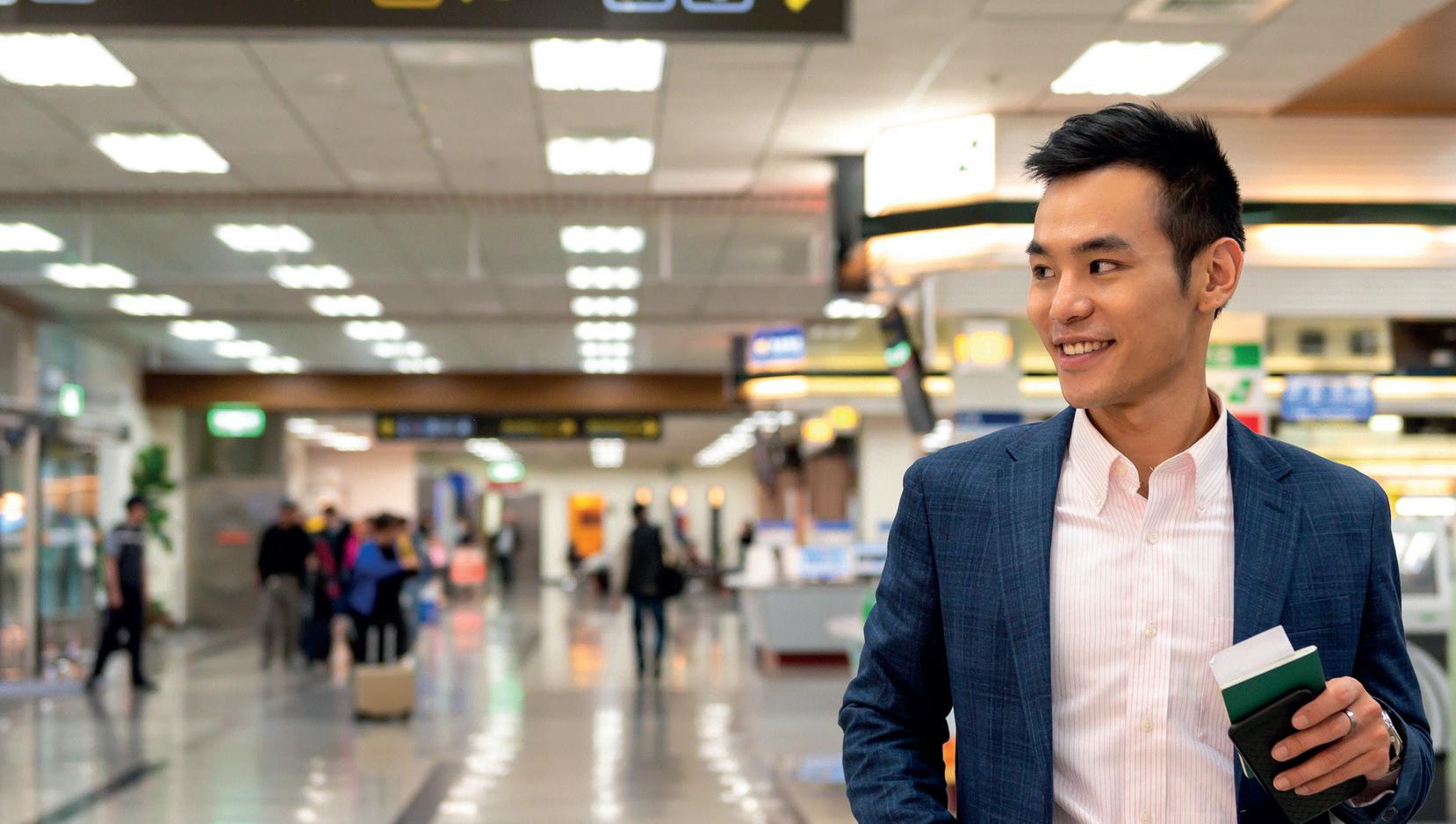
BIAL’s managing director and CEO, Hari Marar, enthused: “We are truly honoured to receive the Best Airport at ACI’s ASQ Arrival Survey Globally for the year 2022. This recognition comes as a testament to the hard work, dedication and commitment put forth by our team.
“We would like to thank the government authorities – the Immigration, Customs & CISF, and Airport Authority of India; for their co-operation in enabling a seamless arrival process.
“We would also like to thank our passengers for their unwavering trust and confidence in us. This award further motivates us to continue to strive towards excellence and reinforce our position as one of the leading airports.”
While His Excellency, Jamal Salem Al Dhaheri, managing director and CEO of Abu Dhabi Airports, commented: “At Abu Dhabi Airports, we are committed to providing our passengers with the best possible travel experience. This award is a testament to the hard work and dedication of our entire team, who strive every day to make our airports a welcoming and comfortable space for all.”
ACI Asia-Pacific director general, Stefano Baronci, noted: “Congratulations to all the winning airports in Asia-Pacific and Middle East regions for achieving the remarkable results in the ACI ASQ programme.
“This demonstrates airports’ firm commitment to continuously improve the passenger experience. It is extremely encouraging to see airports improving their service standards to meet customers’ evolving needs and expectations.”
Unlike other customer experience and benchmarking awards, the Amadeus sponsored ASQ programme is based on live research via surveys gathered at the airport — direct from the traveller — rating their satisfaction on the day of travel.
The survey covers over 30 performance indicators across key elements of the passenger’s airport experience such as ease of finding your way, check-in and the shopping and dining offering.
ACI believes that this gives the most complete picture of the passenger experience journey at each airport and provides global benchmarks for the industry. Last year, more than half of the world’s travellers passed through an ASQ airport.
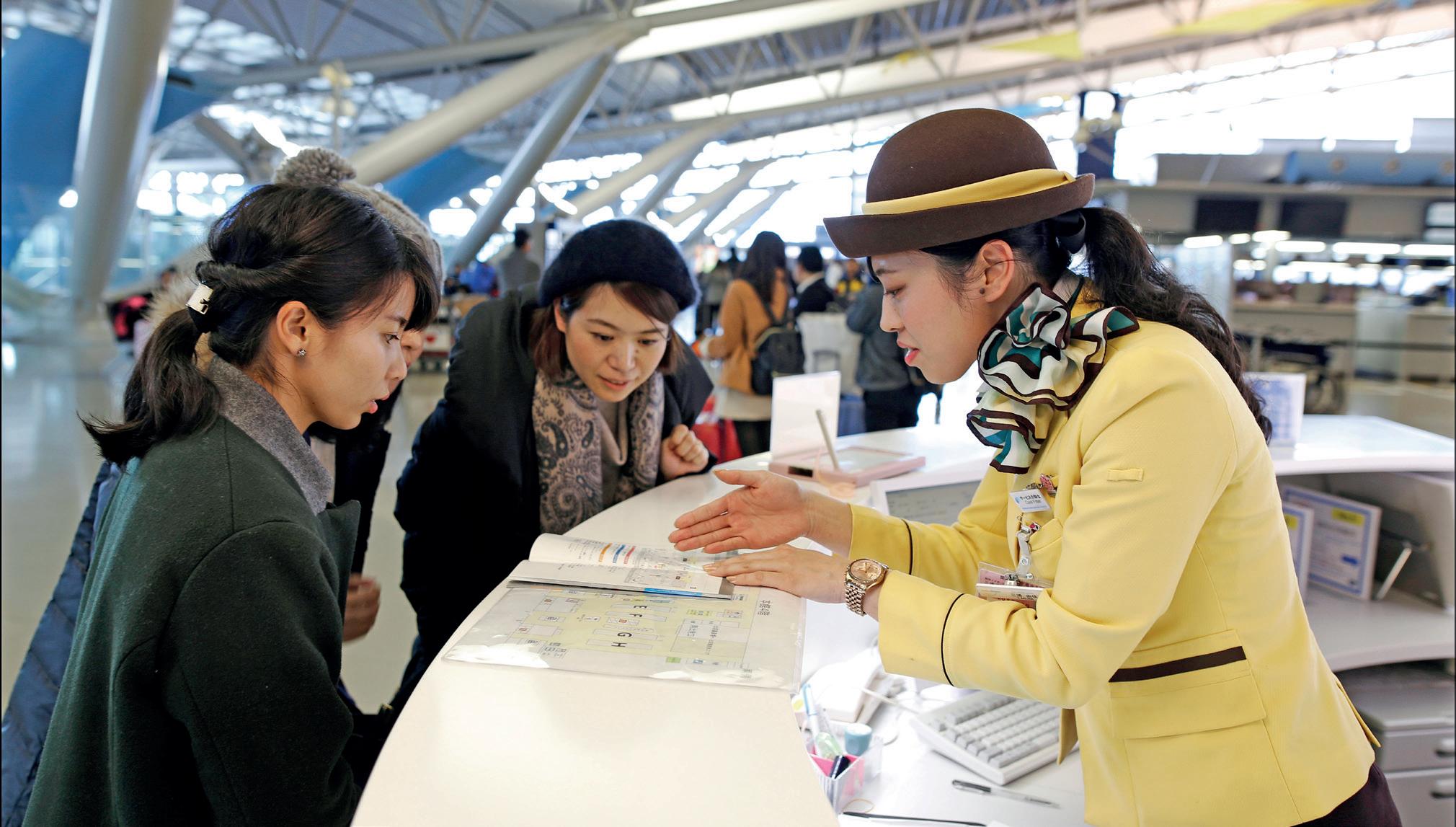
From over 465,000 surveys collected in 2022, 144 awards have been won by 75 airports around the world. The awards categories include the perennial Best Airports by Size (passengers per year) and Region, as well as new categories introduced this year to reflect the evolution of passenger needs:
• Airport with the Most Dedicated Staff
• Easiest Airport Journey
• Most Enjoyable Airport
• Cleanest Airport
Oman’s Salalah Airport triumphed in the new ‘Airport with the Most Dedicated Staff’ category for the Middle East; while the equivalent award for Asia-Pacific was shared by five airports – Beijing Daxing, Kuala Lumpur, Pattimura, Singapore Changi and Sultan Hasanuddin.
It was a similar story for the ‘Easiest Airport Journey’ category, with Salalah again winning in the Middle East and Kuala Lumpur, Pattimura, Singapore Changi and Sultan Hasanuddin in the Asia-Pacific region, although this time they were joined by Indonesia’s Juanda International Airport.
The highly prized ‘Most Enjoyable Airport’ Award for the Middle East was won by Jordan’s Queen Alia International Airport; while Beijing Daxing, Kuala Lumpur, Pattimura, Sultan Hasanuddin and fellow Indonesian gateway, Yogyakarta Inrternational Airport, could not be separated in Asia-Pacific.
Speaking about Queen Alia’s success in the ‘Most Enjoyable Airport’ Award and ‘Best Airport by Size and Region’ for the Middle East in the 5-15mppa category, Airport International Group’s CEO, Nicolas Claude, said: “Since the terminal building’s inauguration 10 years ago, we have been keen to listen carefully to the evolving needs and expectations of our passengers so that we may create a welcoming atmosphere that makes them feel at home, deliver a memorable customer experience and ensure a lasting positive impression of Jordan’s prime gateway to the world.
“We are privileged that the efforts of the entire airport community have been acknowledged by those who matter most – our passengers – whom we thank once again for choosing us as one of the best airports for customer experience worldwide. Congratulations to our teams, partners and stakeholders on these fantastic wins.”
This award recognises airports with the top 20% overall satisfaction score by size and region at departure.
UNDER 2 MILLION PASSENGERS PER YEAR
Pattimura International Airport (Ambon, Indonesia)
Tiruchirappalli International Airport (Tiruchirapalli, India)
2 TO 5 MILLION PASSENGERS PER YEAR
Adi Soemarmo International Airport (Surakarta, Indonesia)
Jenderal Ahmad Yani International Airport (Semarang, Indonesia)
Langkawi International Airport (Langkawi, Malaysia)
Sultan Mahmud Badaruddin II Airport (Palembang, Indonesia)
5 TO 15 MILLION PASSENGERS PER YEAR
Changchun Longjia International Airport (Changchun, China)
Cochin International Airport (Cochin, India)
Shijiazhuang Zhengding International Airport (Shijiazhuang, China)
Sultan Aji Muhammad Sulaiman Sepinggan International Airport (Balikpapan, Indonesia)
Sultan Hasanuddin International Airport (Ujung Pandang, Indonesia)
Yogyakarta International Airport (Yogyakarta, Indonesia)
15 TO 25 MILLION PASSENGERS PER YEAR
I Gusti Ngurah Rai Airport (Bali, Indonesia)
Juanda International Airport (Surabaya, Indonesia)
Rajiv Gandhi International Airport (Hyderabad, India)
25 TO 40 MILLION PASSENGERS PER YEAR
Beijing Daxing International Airport (Beijing, China)
Gimpo International Airport (Seoul, Republic of Korea)
OVER 40 MILLION PASSENGERS PER YEAR
Chhatrapati Shivaji Maharaj International Airport (Mumbai, India)
Guangzhou Baiyun International Airport (Guangzhou, China)
Indira Gandhi International Airport (Delhi, India)
Shanghai Pudong International Airport (Shanghai, China)
Shenzhen Bao’an International Airport (Shenzhen, China)
Singapore Changi Airport (Singapore, Singapore)
This award recognises the top 5% of airports for their offerings (restaurants, shops, entertainment) and efforts to make the waiting time enjoyable and comfortable.
ASIA-PACIFIC
Beijing Daxing International Airport (Beijing, China)
Kuala Lumpur International Airport (Kuala Lumpur, Malaysia)
Pattimura International Airport (Ambon, Indonesia)
Sultan Hasanuddin International Airport (Ujung Pandang, Indonesia)
Yogyakarta International Airport (Yogyakarta, Indonesia)
MIDDLE EAST
Queen Alia International Airport (Amman, Jordan)
This award recognises the airports with the top 20% overall satisfaction score at arrival.
Abu Dhabi International Airport (Abu Dhabi, UAE)

Hartsfield-Jackson Atlanta International Airport (Atlanta, United States of America)
Kempegowda International Airport (Bangalore, India)
This award recognises the top 5% of airports for their overall cleanliness, an element that is key to the satisfaction of passengers.
Beijing Daxing International Airport (Beijing, China)
Indira Gandhi International Airport (Delhi, India)
Kuala Lumpur International Airport (Kuala Lumpur, Malaysia)
Shanghai Pudong International Airport (Shanghai, China)
Sultan Hasanuddin International Airport (Ujung Pandang, Indonesia)
Finally, the winner of the inaugural ‘Cleanest Airport’ award for the Middle East was won by all conquering Salalah Airport; and multiple award winners Beijing Daxing, Dehli-Indira Gandhi, Kuala Lumpur, Shanghai Pudong and Sultan Hasanuddin were honoured in the Asia-Pacific region.
“Congratulations to all the winning airports in Asia-Pacific and the Middle East regions for achieving the remarkable results in the ACI ASQ programme,” enthused ACI AsiaPacific director general, Stefano Baronci.
“This demonstrates airports’ firm commitment to continuously improve the passenger experience. It is extremely encouraging to see airports improving their service standards to meet customers’ evolving needs and expectations.”

ACI World director general, Luis Felipe de Oliveira, said: “Travellers have spoken and recognised the successful efforts of these airport communities in providing outstanding customer experience.
“The ASQ programme not only measures and benchmarks, but also provides airports of all sizes with an opportunity for continual learning and improvement to reach new heights in customer experience excellence.
“The new categories not only reflect the growth of the programme but also the evolution of passenger needs. It is a non-negotiable – airports must listen closely to the voice of customers so we can continue to serve people and communities in a sustainable and resilient way. This is the way forward.”
Elena Avila, Amadeus’ EVP of airport IT and airline operations, said: “Passengers are the backbone of travel, which is why we are thrilled to support the ASQ programme. The awards rightly celebrate airports striving to make positive changes in the face of challenges impacting our industry. Underpinned by closer collaboration between all stakeholders, we recognise modern technologies such as data analytics, biometrics, and the cloud are key to transforming the passenger experience.”
The awards will be officially handed over to the winning airports during a ceremony at ACI’s Customer Experience Global Summit in Incheon, South Korea, this September (4-7).
Click the link below view the full list of ASQ Winners. https://aci.aero/programs-and-services/asq/asq-awardsand-recognition/ APA
Asia-Pacific Airports takes a closer look at a few of the customer experience news stories to have made headlines this year.
Established customer service champion, Singapore Changi, has added another innovative attraction to its bow with the opening of a new rock-climbing wall in Terminal 3.

Located in the Terminal 3 Basement and managed by The Rock School (TRS) Singapore, Climb@T3 features an eight-metre high rock climbing wall and a 12-metre long, 2.5 metre high long boulder wall that adventurers are invited to scale.
The family-friendly facility offers both guided and free-and-easy programmes for climbers of varying skill levels, from as young as two years of age to adult enthusiasts.
Phau Hui Hoon, Changi Airport Group’s general manager of landside concessions, said: “At Changi Airport, we’re constantly looking for ways to delight our visitors and inject excitement into our offerings.
“Climb@T3 is the latest addition to Changi Airport’s suite of leisure and entertainment offerings and will offer a fun and challenging experience to our passengers and visitors. We hope both new and experienced climbers will enjoy scaling new heights with us.”
Constructed by the official wall provider for the 2020 and 2024 Olympic Games, Climb@T3’s star attraction is the eight-metre High Wall, spanning Basements 2 and 3. CAG notes that adventurers can challenge themselves with over 20 different climbing routes to pick from, with each ranging in difficulty from beginner to intermediate levels.
Hamad International Airport (DOH) believes that it has set a new bar for customer experience levels at airports with the launch of the next generation Wi-Fi 6 service across its state-of-the-art terminal.
The airports says that it undertook meticulous design studies to achieve “seamless Wi-Fi 6 coverage from the kerbside of the terminal to the aircraft, and to provide adequate capacity and speed to meet and exceed our passenger’s needs”.
It notes that special attention was paid to the terminal areas where a high number of passengers spend a significant amount of their time, such as boarding gates, shopping areas, and food courts.
The Qatari gateway adds that in addition to supporting the needs of an ever increasing number of passengers,
the new Wi-Fi system – deployed Cisco wireless technologies – will also lay the foundation for enhanced operations by allowing it to better understand how passengers move through the airport, including dwell times and traffic flows.
This, it notes, will help the airport’s management teams optimise retail opportunities, especially for the passengers using Hamad International Airport’s mobile app, ‘HIA Qatar’, as if they choose they can be told about the latest retail/F&B offers from Qatar Duty Free (QDF) and other concessionaires.

The airports adds that the improved connectivity is also benefitting a number of stakeholders and partners who increasingly rely on wireless connectivity and operational mobile apps in the field.
Hamad International Airport’s senior vice president of technology and innovation, Suhail Kadri, said: “We are continually investing in innovative technologies and solutions to provide our millions of visitors from around the world with easy access and the most seamless of experiences.
“The launch of next-gen Wi-fi services at Hamad International Airport not only fits well within our strategy of seamless travel, but also strengthens our commitment to continue to be the leading global digital airport.”
While Hasan Khan, managing director of Cisco Qatar, commented: “We are proud to support Hamad International Airport’s strategic business goals as it continues to grow and introduce new services to effectively transform the passenger experience.
“Cisco has a strong technological expertise providing secure, intelligent, and seamless connectivity for various airports across the world; and we’re happy to bring these capabilities to Qatar’s flagship airport.”
Jordan’s Queen Alia International Airport has become the first gateway in the Middle East to achieve Level 3 status in ACI’s Customer Experience Accreditation programme.
To obtain Level 3, the Amman gateway notes that it implemented an “advanced customer experience strategy through multi-faceted engagement with customers, employees and customer experience professionals”.
In addition, it says that it applied “forward-thinking practices” when it came to Customer Understanding, Strategy, Measurement, Operation Improvement, Governance, Airport Culture and Service Design/Innovation.
Nicolas Claude, CEO of operator, Airport International Group (AIG), said: “Within the airport industry, customer experience is a critical driver of success. For this reason, we are delighted to be the first airport in the Middle East to have progressed to Level 3 of the Airport Customer Experience Accreditation, which emphasises our unwavering commitment to adopting global best practices that place passengers at the forefront of our priorities.
“We sincerely thank our partners and stakeholders for assuming ownership of our customer experience transformation, improving overall processes and services and reflecting Jordanian hospitality – all of which ultimately shape positive change at Jordan’s prime gateway to the world and make Queen Alia International Airport feel more like home for our passengers.”
The five-level programme is the only accreditation initiative in the airport industry to provide a 360-degree view of customer experience management and offer participating airports numerous advantages, such as identifying new practices and developing an action plan; accessing expertise, tools and training opportunities; and engaging stakeholders in improving the customer experience at the airport. APA
Sunny Yoon, executive director of Incheon International Airport Corporation’s Terminal Operation Group, talks to ACI Asia-Pacific’s Sunil Subbaiah about the South Korean hub’s commitment to delivering a world-class passenger experience.
An increasingly competitive market has pushed airports to provide a superior customer experience. As passenger needs rapidly evolve, airports must know their customers’ expectations to provide seamless and superior experience. This is where Incheon International Airport stands out.
Incheon Airport has set a new benchmark, becoming the first gateway in the world to achieve Level 5 status in ACI’s Airport Customer Experience Accreditation programme. This stands testament to the gateway’s commitment to continuously striving to improve its performance, facilities and the services it offers to passengers.
Indeed, the airport’s determination to put the passenger experience at the centre of everything it does and go the extra mile to fully understand the needs of its customers, makes it fitting that Incheon Airport will host the ACI Airport Customer Experience Global Summit on September 4-7, 2023.
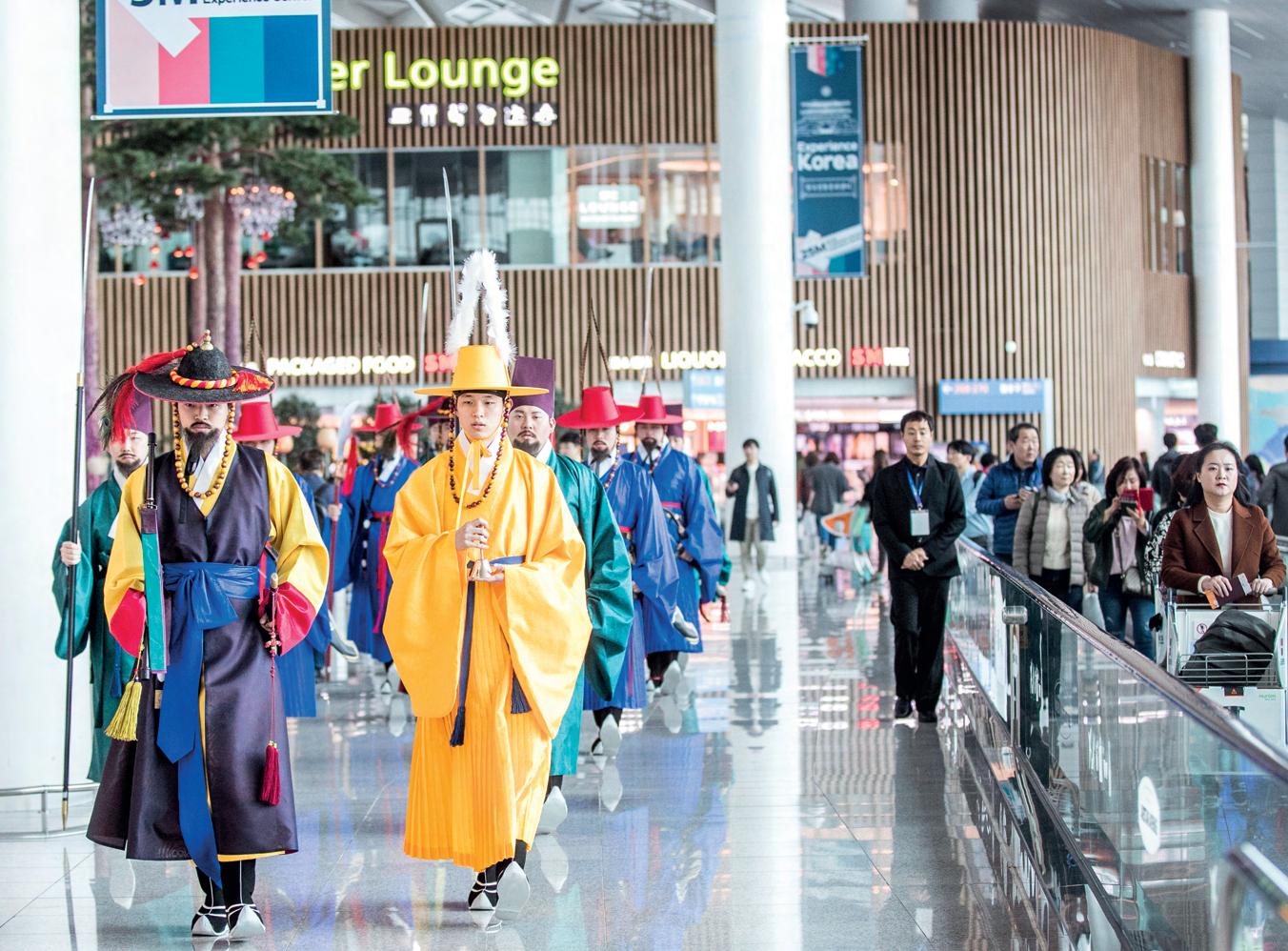
Ever since its opening in 2001, Incheon Airport has continued accident-free and non-stop operation, and we have strived to be the world’s best airport with top-class service quality and passenger experience. The recent achievement in ACI’s Customer Experience Accreditation programme can be interpreted as the success of Incheon Airport, however, I know that this is not the end, but a new beginning.
Ultimately, the airport’s success is determined by how much our passengers are satisfied throughout their airport journey. Customer experience is definitely more than customer satisfaction. It is unique and intangible. From time to time, our CEO, Kyung Wook Kim, asks us what we think people expect from Incheon Airport as we believe that an airport is no longer just a place where aircraft land and take off. It is a place where people meet people, a
place that embodies so many emotions, new beginnings, cultural exchanges and adventures.
For these reasons, Incheon Airport will continue trying our best to become a successful airport, and keeping our eyes on the customer experience will prove fundamental to our success.
DIGITALISATION AND INNOVATION ARE DRIVING CHANGE IN THE AVIATION INDUSTRY. WHAT KIND OF TECHNOLOGIES HAVE BEEN IMPLEMENTED AT INCHEON AIRPORT AND HOW ARE YOU PREPARING FOR THE FUTURE?
New technology will inevitably play a key role in the future development and transformation of air travel at Incheon and across the world. However, we should keep in mind that technology cannot succeed on its own as people are vital to ensuring customer service excellence at airports.
Perhaps the best way to explain what we want to achieve, and what is our business strategy for success, would be to say that our goal is to continue to enhance the reputation of Incheon Airport as the world’s best airport. If we do not confuse the purpose with the means, customer experience will remain as our top priority for the airport’s competitiveness and sustainable growth.
When we introduced the autonomous ‘AIRSTAR’ robot technology at Incheon, we all understood that an essential function was to guide passengers to their desired destination whether that be an airport lounge, shop,
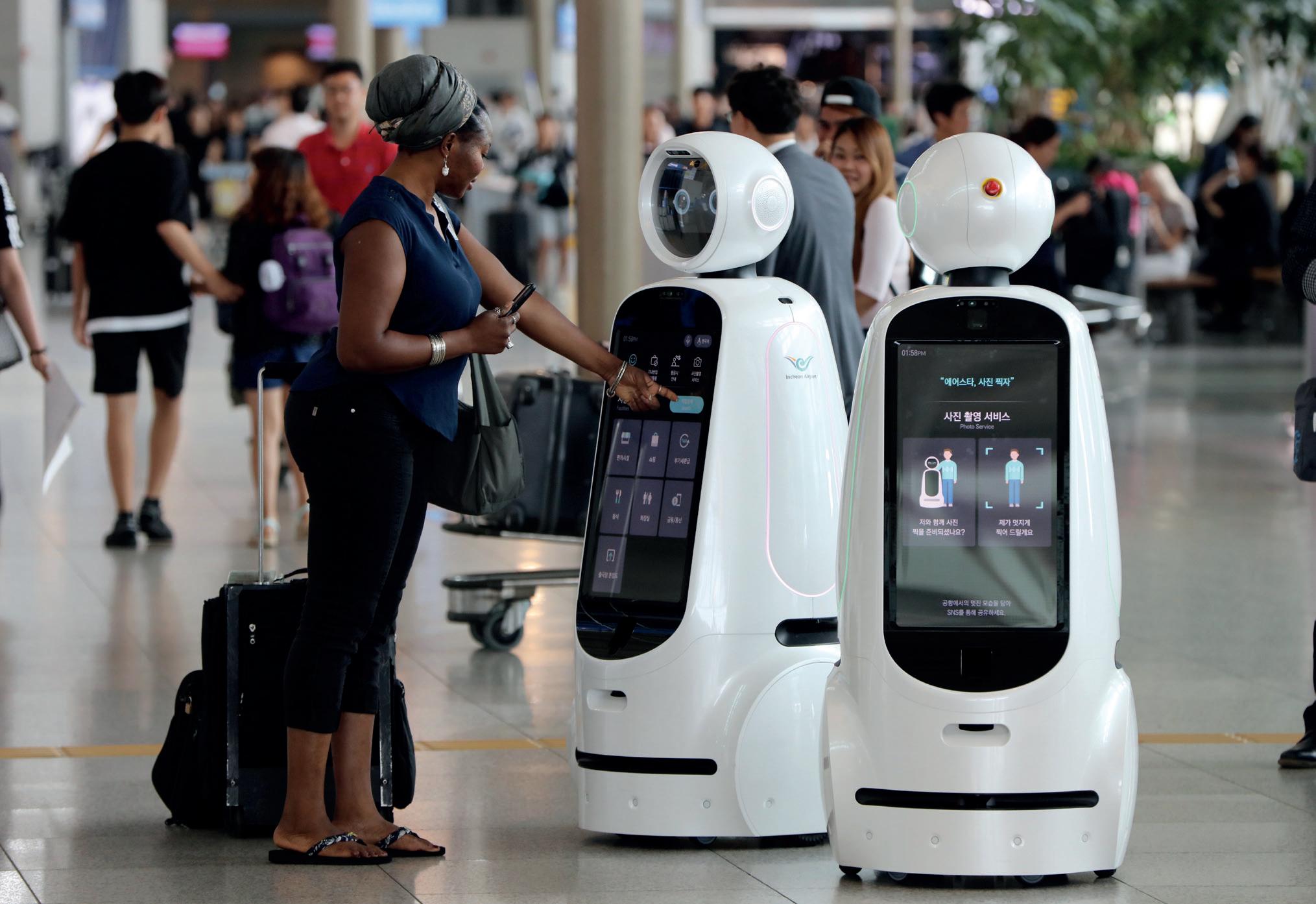
F&B outlet or their boarding gate. However, we also wanted our new robotic touchpoint to provide a new experience for visitors. So, we encourage passengers to pose for photographs with AIRSTARand the robot sends copies of these photos to them by SMS or e-mail.
We hope that such experiences, combined with its essential function, will help build unforgettable memories of Incheon Airport that will encourage passengers to come back in the future and see what else we have introduced!
Another new technology driven initiative recenty introduced at the airport is our‘Incheon Airport Baggage Tracking Platform’, which allows passengers to check the whereabouts of their luggage. We hope that this prove popular with passengers by removing any worries and stress they may have about losing their bags on their travels. This is also a great example of how we are using technology to enhance the airport experience for travellers ahead of any other goal.
CAN YOU TELL US HOW INCHEON ALWAYS SEEMS TO SUCCEED IN RAISING THE CUSTOMER SERVICE BAR DESPITE EVER CHANGING PASSENGER DEMANDS AND NEW OPERATIONAL CHALLENGES?
As you say, passenger demands and needs are continuously evolving, so we can never rest on our laurels. Perhaps, the best way to summarise our strategy and philosophy for better customer experience is to understand our customers.
Our desire to be a smart airport that offers unique art and cultural experiences, for example, comes from listening to and understanding our customers. Needs and opnions change over time, of course, which is why we must maintain our focus on understanding our customers’ needs.
Initiatives such as our Passenger Journey Map and developing Passenger Personas have certainly helped us develop a comprehesive understanding of the diverse customer service needs and and desires of our visitors.
Another good example is our Passenger Behavioural Characteristics Survey, which is totally different to the Passenger Satisfaction Survey. This survey is conducted throughout the year, mainly to understand passengers’ behaviour. Questions include their purpose for travelling, number of companions, any airport shopping list they may have and even their feelings and emotions at every touchpoint.
I know that lots of airports have participated in the ACI ASQ survey, but still hesitate to join Airport CX Accreditation programme. But I strongly recommend they join this programme. ASQ is a comprehensive customer satisfaction survey that breaks down the components of satisfaction very well. And this has allowed for objective comparisons with similar-sized airports.
Indeed, the Airport Customer Experience Accreditation programme is rather well-designed and highly descriptive manual for CX enhancement. It examines an airport’s efforts and outcomes according to eight domains from customer understanding to airport community collaboration.
I think the biggest thing we have gained frothem CX accreditation is that it has helped ingrain a customer service into the minds of all airport staff.
You cannot over-state the importance of good customer service, which should be a common goal of airports across the globe. For example, a dissatisfied departing passenger can decide not toç travel through that airport again, and the same logic applies to the passenger that felt angry or let down at destination airport.
I also believe that all airports utimately benefit from the customer experience excellence and innovation of each other as they learn from each other what is possible. And, at the end of the day, ACI’s Customer Experience accreditation programme is the best guideline for airports looking to enhance customer satisfaction levels. If we all join the programme and compete with each other in terms of customer experience, the entire aviation industry will develop as a whole.
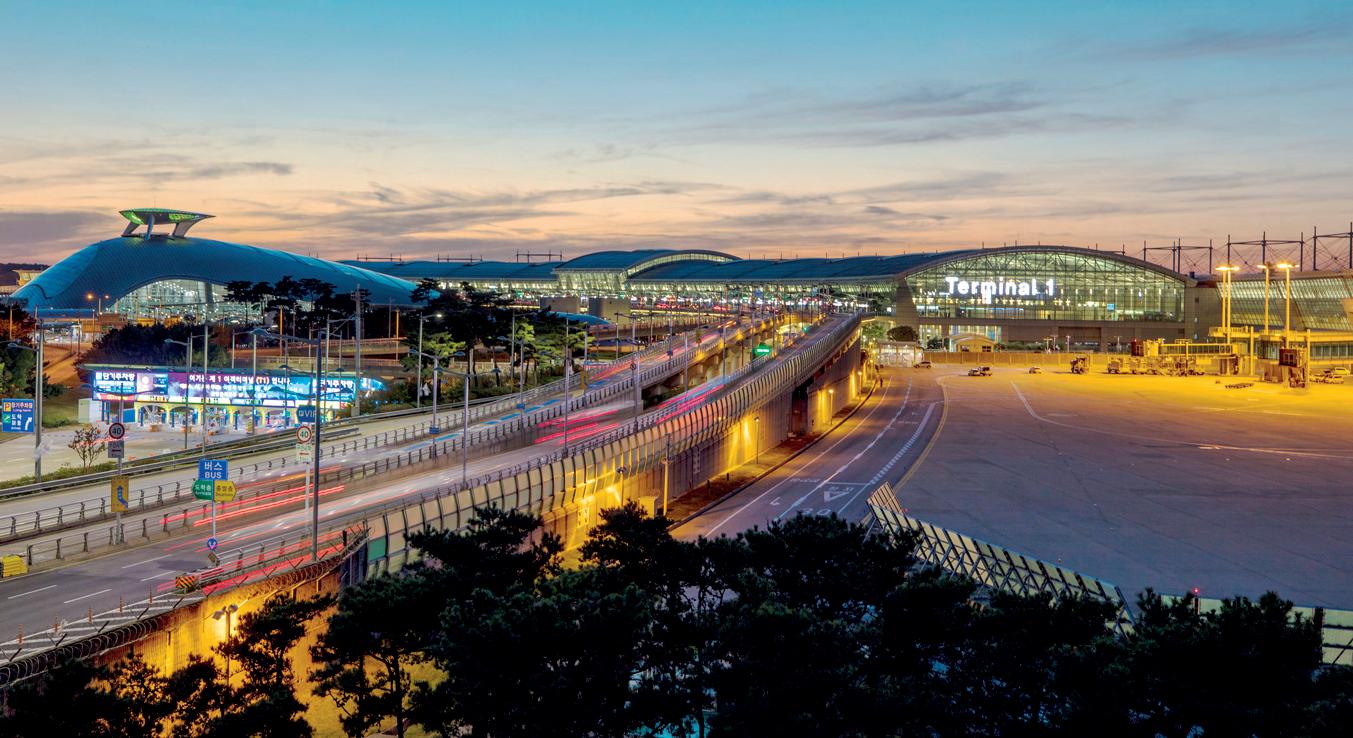
We are currently working on new grand projects to make Incheon Airport a hassle-free and stress-free airport to ensure that our passengers feel lighter and fully enjoy the Incheon Airport experience.
Imagine this future scenario. You are planning a holiday on a beach far away and your luggage will be picked up from your doorstep. You go to the airport, and the usual processes are done with facial recognition technology ensuring that your hands are free from bags and travel documents until you board. This is the technology implementation we are working on now, and it is closely linked to our plan to make our airport a destination in its own right.



























ICF’s Lewis Burroughs and Rob Rushmer look to the future and consider how the transition to electric and autonomous vehicles could impact on existing drop off and car parking infrastructure at airports.
Ever since an airport was first invented in the early 20th century, most people – passengers and employees – have accessed it by using an internal combustion engine car and driving there.
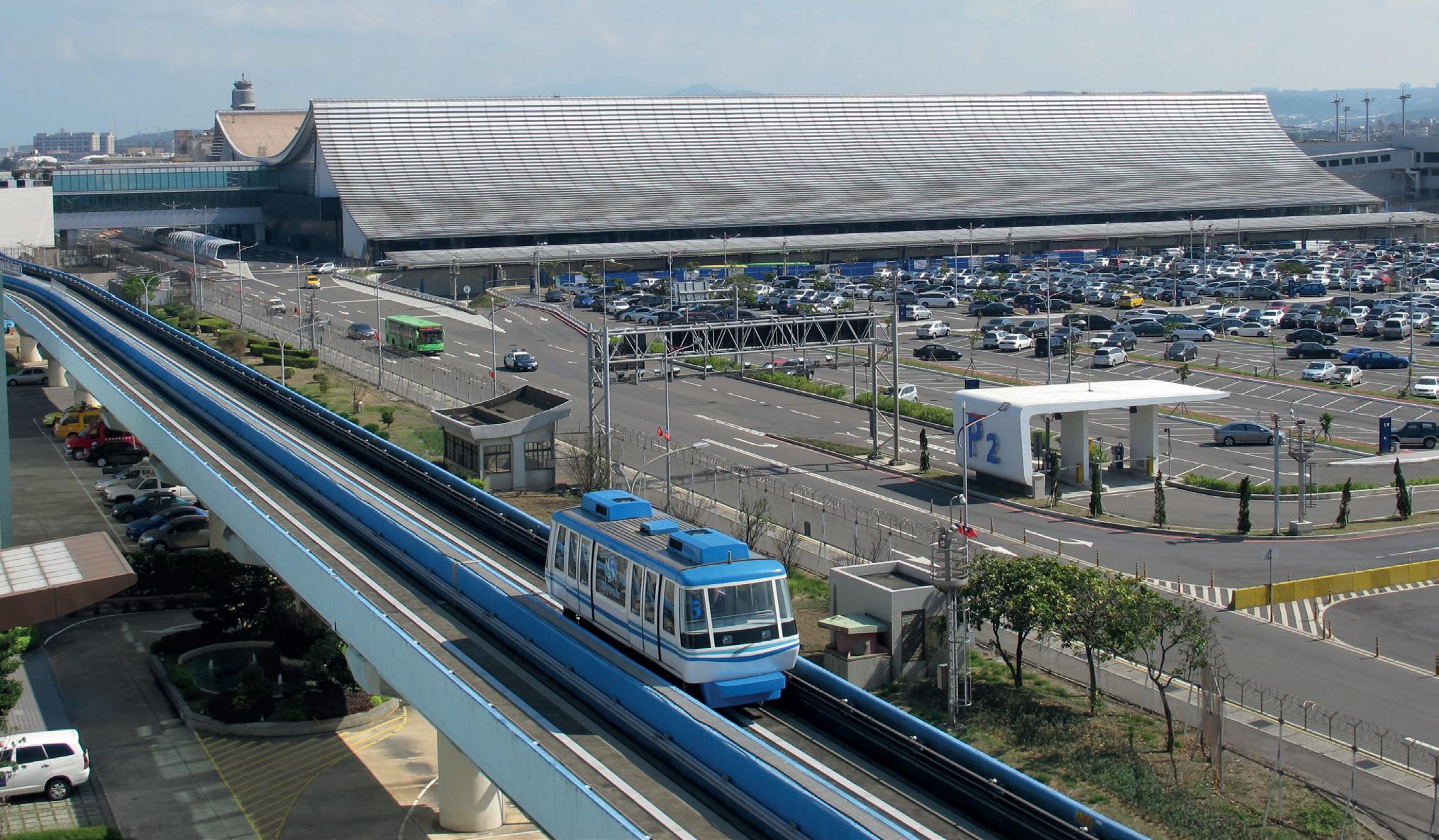
One hundred years later and airport surface access is changing. The vehicle may still look much like a car, but over the next twenty years access will undergo a revolution not seen since the invention of the gasoline powered car.
Other transport modes have eroded the car’s modal share since those early days, but even so, pre-COVID, on average, more than 80% of passengers travelled to a US airport by car and parking accounted for $4.2 billion of US airport revenue in 2017.
That will change and how airports respond to the changing technological needs and preserve revenues will be commercially and environmentally important.
We can think of the changes on two axes: first, what will power the vehicles of the future, and, second, how will
they be used. Each combination of vehicle and use will present a different infrastructural challenge and different revenue threats and opportunities.
Power will be principally electricity and hydrogen, each of which will come with its own infrastructure requirements, but the key disrupter is likely to be how future vehicles will operate.
Whether owned and operated individually, as today, or as the future may hold as shared, pooled, connected or autonomous, the key issue appears to be that the vehicle of the future is more likely to drop-off than park.
A shared vehicle will return to the pool of available vehicles for the next user, with minimal down time. While an autonomous fleet vehicle will position itself based on demand, again reducing the time spent in one location.
The impacts for airports are obvious: increasing demand for drop-off and the need to either repurpose existing car parks, or plan ‘parking’ capacity to accommodate a more transient occupancy.
Drop-off perhaps creates the greatest challenge, but also the greatest revenue opportunity.
Many airports struggle today with drop-off capacity. The kerbside is naturally physically constrained by the frontage of the terminal. Efforts to expand drop-off capacity inevitably create parallel kerbside which stretch further from the front of the terminal requiring passengers to cross multiple lanes to reach the terminal.
Airports have managed this demand by increasing drop-off charges or providing free drop-off only in a remote car park, requiring the passenger to use a shuttle bus to access the terminal.
An increase in drop-off demand creates both the challenge of where to accommodate the demand, but also the opportunity for additional charges. And those charges will be necessary to substitute lost car park revenue.
The potential for reduced car parking demand, however, frees existing infrastructure to accommodate additional drop-off, albeit in a potentially more remote car park than adjacent to the terminal. This in turn creates the opportunity for a premium, in front of the terminal, drop-off facility, and a standard product in a remote car park.
However, autonomous vehicles, able to drop off and exit independently, are not expected to form a significant part of the fleet until the middle of this century. That leaves airports with the challenge of developing their infrastructure over the next 20-30 years without expensively closing off future opportunities.
That 20-30 years will see a progression from the means of power changing today’s vehicles, and later how those vehicles operate. Although with a range of uncertainty, it has been estimated that electric vehicles (EV) may approach 50% of the fleet by 2030 and essentially all of the fleet by 2040.
These vehicles will be either owner operated, as today, or be used in car sharing pools (Zipcar, TribeCar for example) by transport network companies (TNCs such as Lyft and Uber), or peer-to-peer (P2) car sharing (hiyacar, for instance).
The potential for greater use of third-party vehicles (whether car shared, TNC or P2P) will increase drop-off demand, but the continued use of privately owned EVs creates the opportunity for a premium car parking product with the vehicles returned to the owner fully charged.
Through this period, existing car parking infrastructure is likely to transition from traditional parking, to parking with charging to increasing use of its capacity being used for drop-off. Robotic parking solutions may offset the need to develop additional parking infrastructure, but we would caution that this may become redundant technology as
autonomous vehicles will subsequently be able to tightly self-park without the need of a separate technology.
During this transition, airports run the risk of using legacy infrastructure built for one use for something for which it is potentially poorly designed.
For example, to accommodate increased drop-off demand, it is natural, and maybe even the only short-term solution, to relocate passengers and taxis into multi-storey car parks. But emissions linger longer in enclosed spaces, loading bays are limited and vehicles are forced to filter through one-way systems in single file.
This may lead to a poor customer experience in what may be the first or last time a passenger sees the airport, while vehicle operators may start to increase fees assuming they will have to wait in queue as they fight to get to their passenger.
Longer-term, 2040-2050 and onwards, EVs are expected to become increasingly autonomous, which will complete this transition from current car parking being principally areas for cars to stay into being transient spaces for drop-off.
Revenue models will need to follow this transition from charging for parking to charging for access as well as value-add services including premium drop-off, rapid charging, etc.
Finally, the emergence of mobility as a service (MaaS) offers the potential for all infrastructure to be used more efficiently, especially perhaps for airports served by train or metro.
Outside dense urban areas, the use of a metro first requires the passenger to transfer to the origin station. Often that is by car: so why not just drive to the airport in the first place?
MaaS offers the potential for a connected journey starting with a shared, pooled, hailed, or on-demand, journey to the origin station, and potentially the same onward connection to the airport (if not directly served), all within one ticket.
All of this should be good news for airports that have struggled to find space for car parking capacity. The shortterm occupancy of their limited space, offers the potential to accommodate demand, generate premium revenue, and avoid the need to invest in expensive infrastructure.
Stood at a crossroads of technology and behaviour, airports face an interesting challenge to transition their infrastructure and revenue models. The challenge is apparent, but also solvable, the greatest challenge perhaps comes from the uncertain timeframes and, as always, the need for airports to plan for the short-term against a medium changing landscape.
Lewis Burroughs (head of Indian aviation) and Rob Rushmer (principal) are based at ICF’s London office.
China’s re-opening to international travel is likely to be more of a slow burner than a game changer for the aviation industry, writes OAG’s chief analyst, John Grant.
The news of China re-opening to all international travel from January 8, 2023, came as a surprise to most forecasters. Indeed, considering how much China’s capacity has changed over the last few years, it was reasonable to expect further disruption.
In the past three years, China went from being the fifth largest international market in the world with over 102 million seats, to just 7.4 million international seats in 2022, making it 51st in the global rankings – just ahead of Ethiopia, but behind Cyprus. Understandably, this was a collapse with serious implications for the entire industry.
Prior to the January re-opening, the international market from China stood at just 7% of its pre-pandemic levels. Although the locally based airlines were to some extent able to turn their capacity towards domestic services, for most of them, the impact on financial results was still crippling.
Chinese airlines unsurprisingly reported disheartening figures at the end of 2022, with Air China and China Southern showing year-to-date losses of $4.6 billion and $2.4 billion respectively. For China-based carriers, then, the removal of quarantine requirements was welcome news.
However, it will take time for the market to bounce back, as airlines need to adapt on an international level.
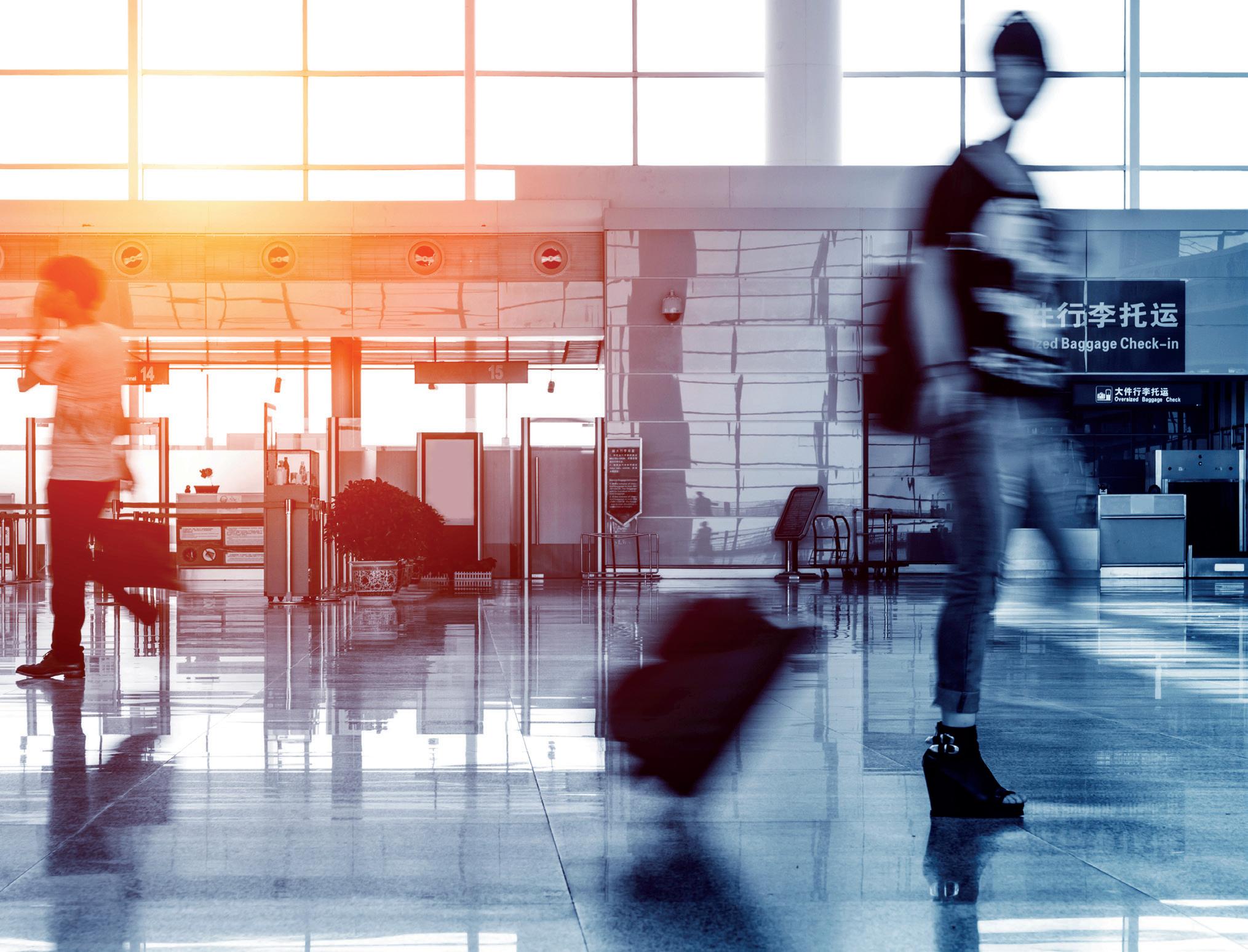
One thing to consider is that the sale of flights to and from China has been largely suspended since 2020. This is partly due to operational difficulties: limitations on capacity, damaging operating performance, expensive penalties of presenting COVID-positive passengers and/or staff are just some of the issues global airlines could face in the market.
This put most airlines operating flights to and from China into maintaining a ‘holding position’, essentially operating with minimal capacity in the market until its eventual return. For example, in 2022, Hong Kong airlines had less
than 10% of its 2019 China frequency, and Singapore Airlines reduced the number of flights to China from up to 30 daily services to just one a day.
For most airlines then, rebuilding capacity to and from China will be a slow process that will require careful consideration, especially for American and European carriers, which have largely re-oriented their aircraft to other international or Asian destinations and now face the logistical hurdle of finding capacity across all routes.

Finnair, amongst others, had previously spent many years focusing on developing a stronger China market presence, but has now built a completely new network based on United States destinations and much less exposure to China and the broader Asia market.
With many airlines having pre-sold many of their summer 2023 flights, switching capacity to now also cover China might pose a problem.
European carriers find themselves in an even more difficult position given the current geopolitical situation. For airlines based in Asia and North America, accessing China is a perhaps logistically challenging, but otherwise feasible reset to the normal operating patterns and schedules. With flights scheduled to maximise onward connectivity, it will largely be a return to business as usual.
For European airlines, however, an eventual return to China will be especially challenging as they must continue to avoid Russian airspace.
In such a situation, alternate routings from Europe to Asia require either a Southerly track crossing Central Asia, or a Northerly routing which sees aircraft reach almost as high as the North Pole before heading back down.
In either case, the re-routing adds around one to two hours of flight time, taking the total beyond the twelve-hour mark – the point at which carriers have to grapple with complex aircraft integration issues that bring about either a delay to the returning flight, inefficient crew and aircraft utilisation, or a range of missed connecting opportunities.
To take the example of Lufthansa, which operated 2,100 flights to China in 2019, adding an extra two hours of flight time equals 175 days of additional flight time just in one direction.
No airline has such spare capacity in its fleet, meaning that even after this international re-opening, airlines will likely have to continue to operate with less frequency than in 2019 – and for some, returning to this market might not be worth the lost opportunities elsewhere on a global scale.
A number of administrative and industry-related factors have to be taken into account when evaluating the recovery of China-based airlines in the past year.
First, throughout 2022, these airlines continued to operate to Europe via Russian airspace, which created a significant time and cost benefit to carriers in a re-opened market. This was added to the pre-existing financial advantage that Chinese airlines enjoy over European rivals due to lower wages and operating costs.
Second, there is the issue of Chinese travellers being held back by the lack of passports. China suspended the renewal of passports in the last three years, meaning that approximately 30% of the market will need to reapply for their travel documents.

This is a time-consuming process, even without the immense backlog that administrative bodies will now have to address. Whilst, of course, this still leaves about 70% of Chinese passports valid, it will remain an impediment throughout the early months of the international re-opening for outbound travellers.
Third, it must be considered that prior to 2020, outbound travel from China was largely led by group travel and package holidays, which we expect will remain the same following the re-opening.
However, since the pandemic, many package operators have developed other source markets, such as India and the Middle East. Any tour operators hoping to tap into the China market again will have to go through the logistics of re-contracting and adjusting product requirements, making this market slower to rebound. Instead, we can expect that visiting friends and relatives will be driving recovery in the first half of the year, with the US (and its population of 3.8 million Chinese Americans) being a key destination.
Some of these factors support, while others work against, China’s airlines, and the mixed route of recovery reflects that well.
Rebuilding is well and truly underway, with some of China’s biggest airlines operating more domestic seat capacity than in February of 2019. China’s biggest low-cost carrier, Spring Airlines, has also recorded strong capacity growth, with seats now 46% higher than in February 2019. Juneyao Airlines has also seen growth, with seats 30% ahead of February 2019.
In terms of domestic flights, not all routes have recovered to their pre-pandemic level yet, admittedly in part due to the timing of the Chinese New Year, which fell on January 22 this year versus February 5 in 2019.
Chengdu-Beijing, Guangzhou-Chengdu, Beijing-Shenzhen and Chongqing-Shenzhen are all currently below February 2019 levels. However, of the top 10 busiest domestic routes, Guangzhou-Hangzhou and Beijing-Shanghai have recovered well, with 20% more seats this February than in 2019.
From an international perspective, the market still operates at just 18% of its February 2019 levels, but seat numbers are seeing a steady increase.
Carriers added 355,000 more international seats compared to January. Capacity has grown across most destinations, with Thailand, Australia, the UAE, Vietnam, and the Philippines having seen the highest levels of recovery. Currently, the two largest international markets are Hong Kong and Macau.
Overall, China aviation has begun a slow but steady process of returning to its pre-pandemic situation. The removal of restrictions in January was sudden, but as expected, it has brought about slow change and we will have to wait even longer before China regains its former position as a major international market.


A host of new carbon reducing initiatives, renewable energy plans and more show that sustainable development continues to be a top priority for the region’s airports, writes Joe Bates.

Shanghai’s Pudong and Hongqiao airports have received the top rating in China’s first carbon evaluation of airports.
Eight airports, including Pudong and Hongqiao airports – under the administration of the Shanghai Airport Authority (SAA) – were awarded the highest three stars rating in the assessment.
In recent years, SAA notes that it has adhered to an ecofriendly development path. Indeed, in 2022, it rolled out a dual-carbon development strategy, took the lead in completing dual-carbon system research in the civil aviation industry, and introduced goals, paths and tasks to achieve peak carbon and carbon neutrality at Shanghai’s airports.
Hongqiao Airport has built the first airport parking lot in China that provides charging services and dedicated queue channels for new energy taxis.
Pudong Airport, meanwhile, has installed a total of 1,584 charging stations. In terms of their energy supplies, the energy centres of the two airports have adopted water storage and cooling technologies.
This, says SAA, has significantly saved energy costs by preparing for night-time electricity consumption and providing air conditioning cooling during the day in a staggered manner, helping to smooth the peaks and troughs of the city’s power grid.
The carbon evaluation was approved by the Civil Aviation Administration of China and carried out by the China Civil Airports Association after examining the energy-saving benefits for both airports.
BRISBANE ACHIEVES LEVEL 4 STATUS IN ACI’S AIRPORT CARBON ACCREDITATION PROGRAMME Brisbane Airport (BNE) has become the first Australian airport to receive Level 4 ‘Transformation’ status in ACI’s Airport Carbon Accreditation programme.
The new status recognises Brisbane Airport’s long-term carbon management strategy towards absolute emissions reductions and, it believes, evidence of how it is forging meaningful partnerships to reduce the emissions of airport its partners.
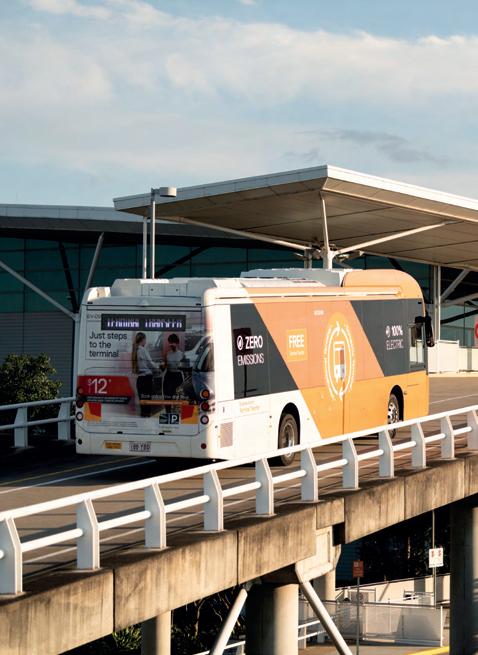
“Given Australia’s reliance on air travel to connect to the rest of the world, partnering with all parts of the aviation sector to decarbonise the industry is essential to protecting the natural heritage that Queensland is world-renowned for,” says Gert-Jan de Graaff, CEO of Brisbane Airport Corporation (BAC).
“We are playing an active role in enabling the airport community and aviation sector to decarbonise. Queensland is well placed to be part of the Sustainable Aviation Fuels revolution and design of next generation aircraft.”
Brisbane Airport is only the tenth airport in Asia-Pacific to reach Level 4 or above carbon accreditation status.
ACI Asia-Pacific’s director general, Stefano Baronci, commented: “We are proud of Brisbane Airport’s excellent achievement in reducing carbon emissions and setting an example for airports in the region.
“Brisbane Airport is firmly positioning itself as one of the leaders in efficient carbon management and this achievement truly demonstrates its firm commitment to invest in a more sustainable future.
“It’s encouraging to see airports making tremendous efforts to adapt to the impact of climate change and enhance climate-resilience in an era of unprecedented challenges for the industry.”
Hong Kong International Airport has selected SITA to provide a carbon management platform to monitor data on carbon emissions across the airport environment.
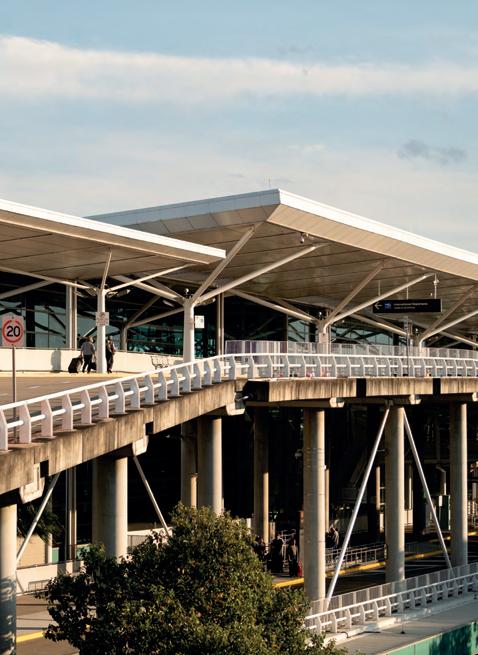
The move will help the airport track key performance indicators as the airport progresses towards its net zero carbon goal.
SITA’s carbon management platform, to be fully deployed by summer 2023, will collect and aggregate data on carbon emissions from a variety of sources within the airport.
It will span Scope 1, 2, and 3 emissions and include data from 29 participating business partners across the airport value chain, overseeing services such as ground handling, aircraft maintenance, air cargo logistics and catering.
In 2012, HKIA operator, Airport Authority Hong Kong, pledged to make the gateway the world’s greenest airport, reinforcing this goal in 2021 with the announcement of its 2050 Net Zero Carbon Pledge, a commitment to achieve net zero carbon emissions by 2050.
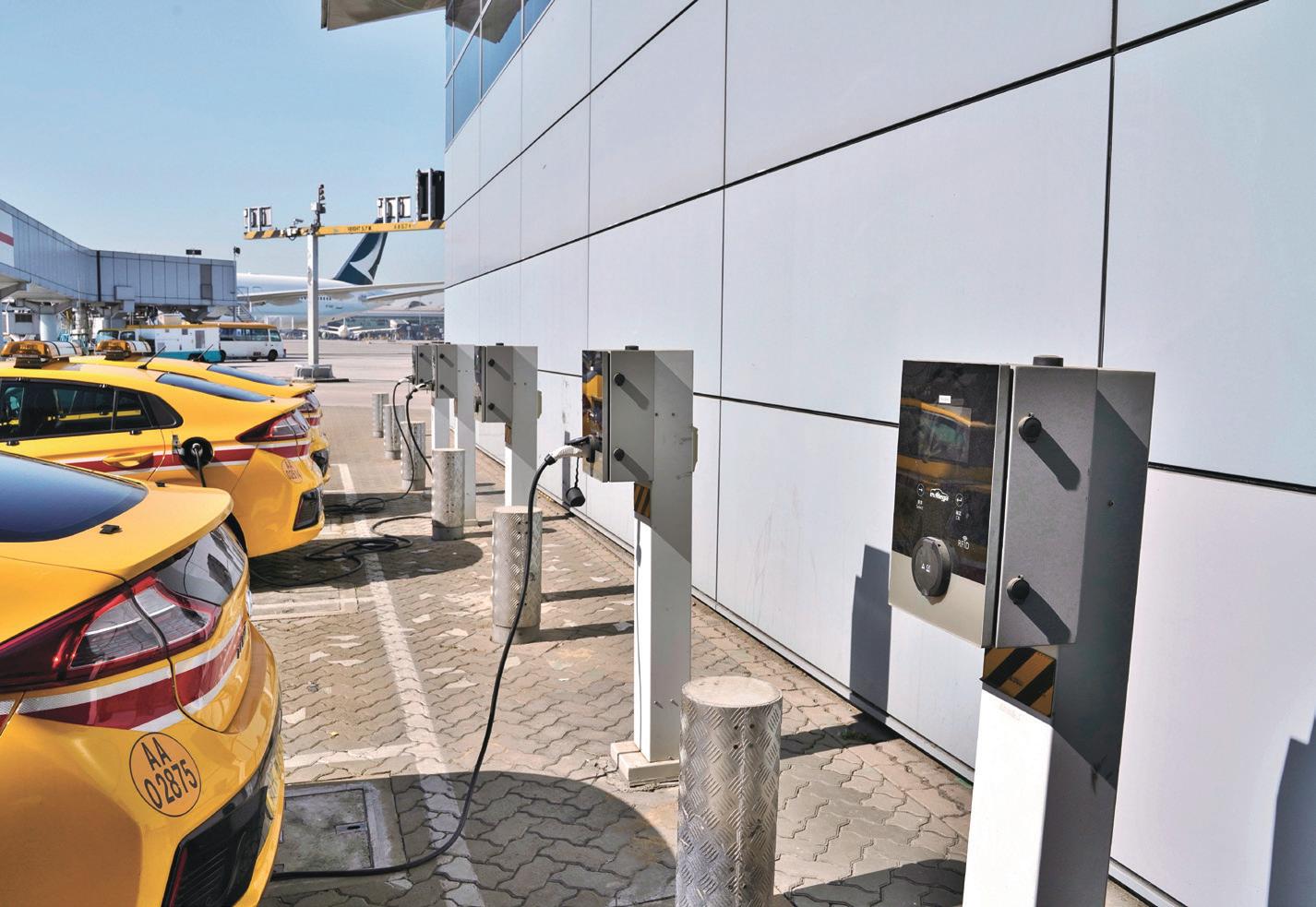
Airport Scope 1 and 2 emissions stem largely from fossil fuel energy consumed to operate the terminal building, vehicles, and equipment, while Scope 3 emissions — indirect emissions originating from the airport’s value chain and business partners — are more difficult to track and represent a significant contributor to overall airport emissions.
In the case of HKIA, airport business partners account for more than 50% of airport-wide ground emissions.
HKIA has adopted an airport-wide approach for carbon management, working collaboratively with business partners to set carbon reduction targets and implement measures to accelerate airport-wide carbon reduction.
And while the airport already has an online emissions tracking system, it does not unify emissions data collected from the many sources active in the airport environment, requiring more time-consuming manual processes.
SITA’s solution, supported by leading net-zero technology partner Envision Digital, aggregates data streams from across the airport environment and participating business partners and consolidates these into a single customisable dashboard.
This, it says, allows the tracking of emissions data alongside key performance indicators towards HKIA’s Net Zero Carbon Pledge, the dashboard interface facilitates carbon performance tracking, providing the granularity to monitor individual emissions sources against specific targets.
AAHK’s general manager for sustainability, Peter Lee, said: “The development of this new carbon management system will provide comprehensive, accurate carbon emissions tracking against the long-term target for both AAHK and each of our pledged business partners, and serves as a foundation for transparent reporting.”
MITIGATING THE IMPACT OF CLIMATE CHANGE
Kansai Airports has been selected as the Osaka Governor’s Award winner for the 2022 Osaka Climate Change Action Awards.
The ‘Osaka Climate Change Award’ is given to companies with offices in Osaka Prefecture or their business facilities that have made outstanding efforts to set an example for others regarding climate change counter measures and heat island effect mitigation.
In response to the damage caused by Typhoon Jebi in September 2018, Kansai International Airport raised the seawalls around the airport island by adding the projected sea level rise due to climate change to the usual amount of raising, as well as installing wavedissipating blocks, raising electrical equipment to above ground level, and installing large scale water cut off barriers.
The award was given in recognition of Kansai International Airport’s disaster prevention project as the best effort in the field of application from comprehensive perspectives such as sustainability and ripple effects.
“This disaster management project aims to mitigate and contain the effects of natural disasters, such as unexpected typhoons that have become larger due to climate change, and minimise their impact on the Kansai economy,” said an airport statement.
Auckland Airport is looking skywards as it takes its first steps to generate onsite renewable energy, with plans for rooftop solar systems atop two of its newest buildings.
Premium outlet centre Mānawa Bay, being built to the north-east of the airport precinct, will support what’s expected to be the largest rooftop solar system in New Zealand on top of the 35,000sqm building.
At 2.3-megawatts, the solar array will generate the equivalent of 80% of the 100-store centre’s power usage when it opens in 2024.
Also under construction is the NZ$300 million-plus Transport Hub opposite the international terminal that will support a solar array of 1.2 megawatts on its 14,000sqm roof.
That’s enough to power the attached office building and electric vehicle charging stations within its car park.
“Using solar as a renewable energy source is a key step towards meeting our target of net-zero carbon emissions by 2030,” enthused Auckland Airport’s chief executive, Carrie Hurihanganui.
“Solar energy makes sense at the airport for many reasons. Large, flat roof structures and sunlight are things we have in abundance, so rooftop solar systems can provide a resilient supply of renewable energy as the airport grows.
“We also recognise that new development generates an increase in carbon and we’re actively taking steps to minimise this.”
Solar power production capacity from Mānawa Bay and the Transport Hub is expected to generate enough energy to power 634 houses per year and avoid approximately 588 tonnes of CO2 emissions per year – equivalent to a Toyota Corolla driving the length of New Zealand 1,865 times.
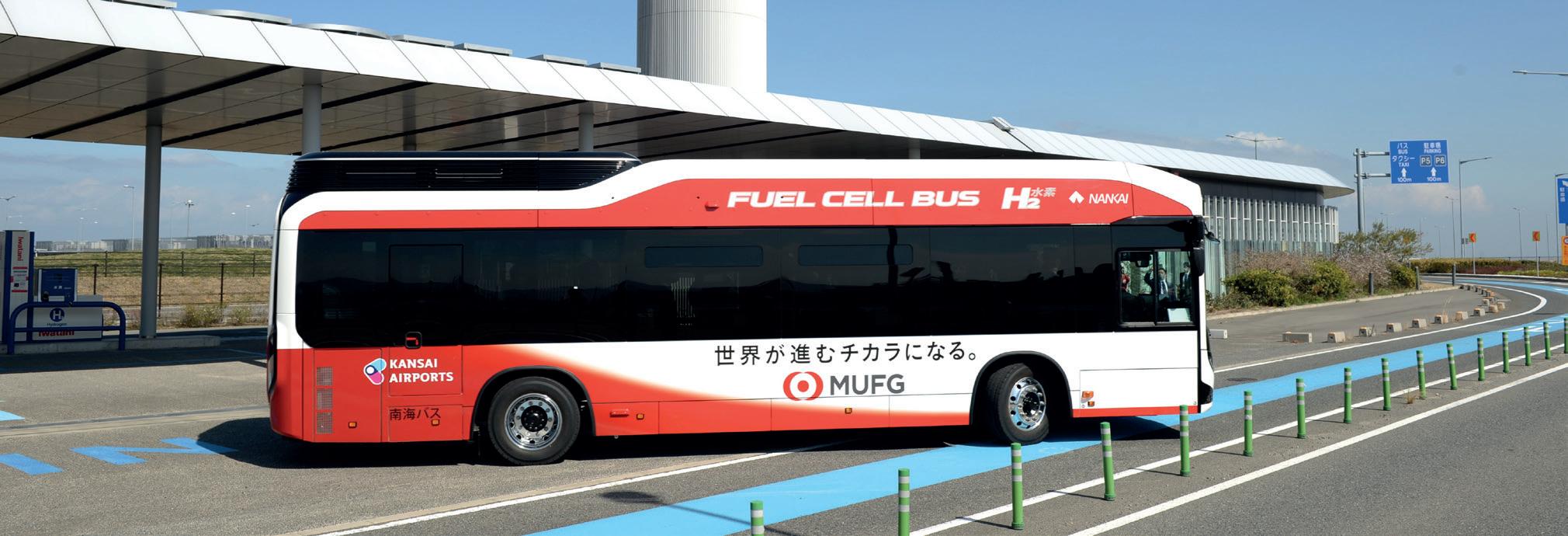
“We are committed to a 90% reduction in Scope 1 and 2 emissions from a 2019 baseline, with the remaining circa 10% to be addressed through the purchase of certified carbon removals until technology development offers other alternatives,” said Hurihanganui.
“With the airport’s energy demands expected to grow significantly over the next decade, we are looking for opportunities to meet future energy needs with a mixture of on-site and off-site renewable energy sources.”
Auckland Airport’s current annual power usage is equivalent to 5,000 homes or a town about the size of Wanaka. But power use in about 10 years’ time is estimated to be equivalent to 16,000 households (or a town about the size of Whanganui), driven by the forecast growth in passenger numbers and terminal development.



We

“We are committed to growing Auckland Airport in a way that’s sustainable environmentally, economically and socially, and solar power production is a new chapter in this story,” added Hurihanganui.
As a result, plans are already underway to ensure future terminal developments are solar-capable. This includes the combined domestic and international jet terminal.
The gateway is also helping to make electric vehicles a viable and environmentally-friendly option for its customers, so when the new Transport Hub opens in late 2024, it will have dedicated spaces throughout the carpark for electric vehicle charging stations.
Auckland Airport has disclosed a decarbonisation pathway to achieve net zero carbon emissions by 2030. This pathway targets a 90% reduction in Scope 1 and 2 carbon emissions from a 2019 baseline, and is aligned with 1.5oC.
Hamad International Airport (DOH) has demonstrated its green credentials by successfully renewing its Level 3 ‘Optimisation’ status in ACI Airport Carbon Accreditation programme.
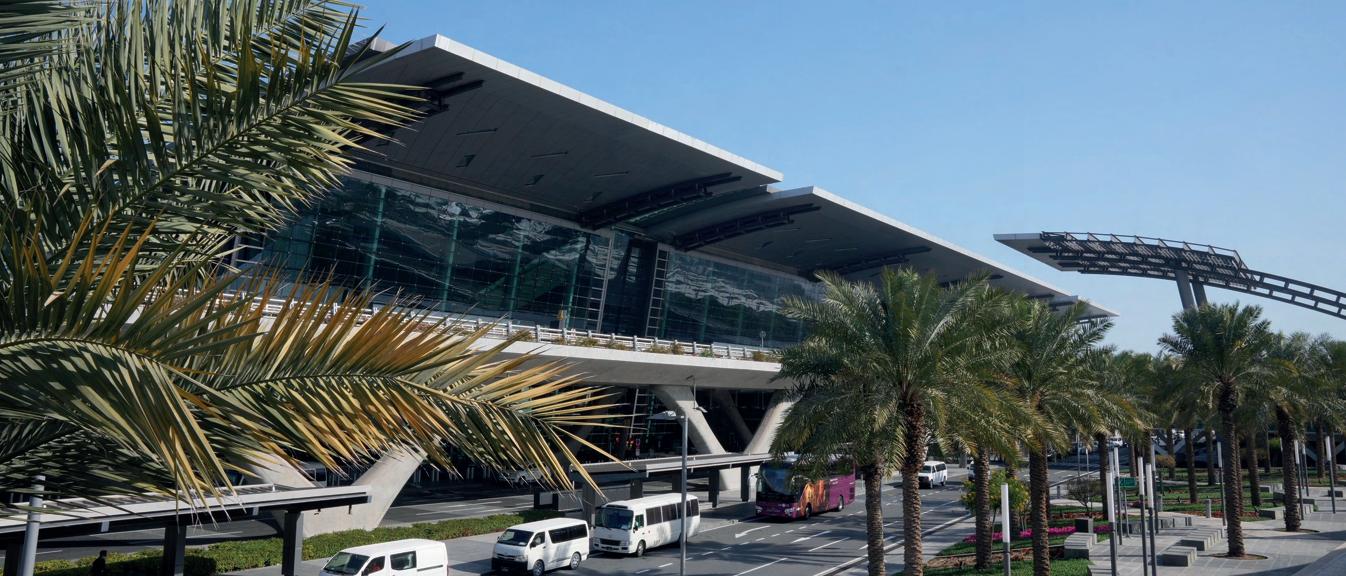
The Qatar gateway says that the successful recertification is a reassurance that its carbon management processes and activities have effectively reduced CO2 emissions.
During the recertification process, operator, MATAR, was audited by independent third party verifiers from August to October 2022, and then further verified by the independent scheme administrator WSP.
Commenting on the achievement, MATAR’s senior vice president for facilities management, Michael Mcmillan, said: “We are very proud to maintain this significant accreditation at the optimisation level since 2017, acknowledging the efforts of the MATAR Teams and our stakeholders.
“Sustainability and environment stewardship are strategic pillars at Hamad International Airport as we continue our intension and ambition to demonstrate leadership within our industry and country – notably within our recent expansion project – where we achieved 4-Star rating under The Gulf Organization for Research & Development (GORD) for reducing carbon footprint.”
In collaboration with its stakeholders and partners, MATAR plays a vital role in monitoring, managing and reducing Hamad International Airport’s carbon emissions to fulfil the airport’s long-term environmental objectives of carbon emissions reduction by 30% by 2030 – driving for continuous environmental improvement and sustainability.
Christchurch Airport’s renewable energy precinct, Kōwhai Park, has taken a giant step closer to reality.
After a year-long process that attracted interest from organisations across the globe, the airport has chosen one of New Zealand’s largest energy companies, Contact Energy, and international solar developer, Lightsource bp, as its partners to deliver phase one of the park.
The first stage of the park will consist of a solar farm that will span around 300-hectares on land just behind the airport’s runways.
Kōwhai Park is expected to be the first of a number of planned solar farms for the Lightsource bp and Contact Energy partnership in New Zealand.
Christchurch Airport chief executive, Justin Watson, says the development marks a major milestone for Kōwhai Park, which is an important project for New Zealand.
He enthused: “Kōwhai Park will enable low emissions aviation and help provide the extra green energy New Zealand needs to transition away from fossil fuels. We’re excited to have found partners with the technical capability to do this well and the values to ensure it’s done right.
“Our goal is to ensure Kōwhai Park is ready to provide the large amount of green energy these new aircraft will need. This starts with the solar farm, but we’re working to include green hydrogen generation down the track.
“This is an exciting time for aviation – zero and low emission aircraft are not far away. Our job is to do all we can to ensure they can take off as soon as possible.”
With around 300,000 solar panels, Kōwhai Park’s solar farm will be among the largest in New Zealand and, if all goes to plan, in time, the park will be home to green hydrogen generation and able to meet the needs of high users of energy, like vertical farms and data centres.
The expected 150MW (or 170MWp) array will generate 290 GWh per year. This is equivalent to the annual demand of approximately 36,000 homes or approximately half of Christchurch’s domestic flights being converted to low-emission technologies.
It will have the same carbon benefit as planting around 1.25 million native trees and shrubs.
Newcastle Airport has signed a new energy purchase agreement with Flow Power, a leading Australian renewable energy retailer.

Under the agreement Flow Power will prepare an energy plan that will see the airport achieve its target of 100% renewable energy seven years ahead of schedule, significantly reducing its carbon footprint and supporting the airport’s sustainability efforts.
Newcastle Airport CEO, Dr Peter Cock, said the agreement is a major step forward in the airport’s sustainability journey and demonstrates a commitment to reducing its environmental footprint.
He said: “The airport is expanding to deliver growth to the Hunter region, and sustainability is key to everything we do.
“We’re delighted to partner with Flow Power. By offsetting grid consumption with green generation certificates, they’ll help us significantly reduce our greenhouse gas emissions and help us achieve our 100% renewable energy strategy well ahead of our 2030 target.”
Executive general manager of aviation, Shane de Wit said the engagement with Flow Power would help make Newcastle Airport a leader in making the transition to a low carbon economy.
“Flow Power’s flexibility and efforts have empowered the airport to become a leader in environmental sustainability, both in the aviation industry and in the Hunter Region.
“The new agreement provides us with the ability to develop local renewable energy and offset any remaining demand with green generation certificates from off-site renewable energy sources, including exploring future renewable wind projects when they become available.”
De Wit said Newcastle Airport has already implemented several key initiatives.
“In 2021, 99kWh solar was installed at the airport producing 3.9% of electricity and reducing our carbon footprint by more than 75 tonnes,” enthused De Wit.
“Our expanded terminal is being designed with a 5-Star Green Star rating, and our new Covered Car Park will feature 1,212 solar panels, powering more than 30% of the airport.
“Sustainability is also being incorporated into Astra Aerolab’s built environment – our first commercial office building has been designed with a successful 5-star Green Building rating assessment from Green Building Council Australia.
“We’re committed to improvement and will continue to explore opportunities to reduce our environmental impact and support the transition to a low-carbon future.” APA
With the notable exception of the COVID caused disruptions, it could be argued that airports – and the airlines and businesses that operate within them – have made giant strides in reducing wait times and improving the queuing experience over the last few years.
However, some waits remain inevitable. And how people wait can make all the difference between a positive experience and a negative one, and virtual queue management platforms are poised to reimagine the way people wait at airports.
We already use remote check-in via airline apps when we fly. Imagine having the ability to check in not just for your flight but also for service with a ticketing agent and airport security checkpoints.
For airport, airline, and vendor employees, shift changes can be a flurry of activity. What if digital queuing software could ensure security protocols are followed but with a faster, more efficient system of scanning badges so workers report to their stations in a more timely manner?

Three use cases for virtual queue management stand out. One could revolutionise the method by which passengers get to their gates, and the other two show how the future is already arriving.
Express lines, redesigned layouts, and two decades of travellers understanding what they need to do when going through security have helped improve efficiency at airport security checkpoints. Digital queuing has the potential to move passengers to their gates even faster.
Virtual queuing could eliminate most of the standing and guided pacing through the queue. Through the software, travellers could receive a time to report to security by checking in remotely from their phone, tablet, or computer when they arrive at the airport by scanning a QR code on their smartphones or scanning their boarding pass at a kiosk.
After checking into the virtual queue, passengers would receive notifications on their phone for estimated wait times, including an alert to come to the checkpoint to begin the screening process.
Instead of standing in a long line, they could visit the restroom, check out a gift shop, get food for the plane, or say goodbyes to loved ones. The amount of time required to get through security wouldn’t change, but passengers would have greater control over how and where they spent their wait time.
Studies of retail establishments support the notion that happy customers purchase more. It stands to reason the same holds true for happier, more relaxed passengers in an airport.
Travellers who aren’t pressed for time can enjoy a more leisurely bite to eat or a relaxed browse in the airport bookstore instead of rushing by restaurants and bypassing shops where they might find last-minute gifts for family and friends or perhaps replacement items like travel pillows and headphones.
Managers of airline and airport workers can monitor passenger traffic patterns throughout the facility to appropriately staff services that require more attention. For airline and airport personnel, digital queuing could make
Virtual queuing is coming to an airport near you soon and could represent the future of waiting at airports, writes Steve Covate.
their jobs more predictable and less stressful. Employees could feel productive instead of hectic during busy periods.
This use case isn’t a reality yet – many things need to come together for it to happen. But such a system is on the horizon, and it promises to make the airport experience better for travellers and employees alike.
Airport security measures in most countries require every airport, airline, and vendor employee – including contractors doing various repair, maintenance, or construction work – to have a badge granting them access to certain areas of terminals, and the badging office presents a unique opportunity to increase efficiency.
Virtual queuing is already making a difference at some US airports in how new employees and contractors are screened before admittance to the building(s). Similar scenarios pertain to the badging office: Instead of waiting in long lines to report for duty, workers can instead check in remotely or at an on-site kiosk. Afterwards, they can wait wherever they choose, receiving updates to their phones about their place in line.
But virtual queuing doesn’t just make the wait easier for contractors, who also might be allowed to check in via text message before arriving at the badging office. The software introduces a host of additional efficiencies that include: The system can automatically send an update with document requirements that contractors need to be badged. They can retrieve those documents, ask questions, reply to the office, or leave the queue and reserve another time later.
Certain contractors who are waiting can be prioritised based on the nature and urgency of their work, how long they’ve been in the queue, and anything else the office deems important.
Important updates can be sent via text directly to workers and contractors about anything that could impact their shift based on their role and level of access: weather, terminal closures, flight delays and cancellations, supply availability and delivery, job assignments, and more.
Data that the system generates can inform the badging office’s operational strategy, from staffing to training to budget.
Virtual queue solutions have a positive impact on the customer experience but can also play an integral role in improving employee satisfaction. Real-time updates delivered right to their phones and the ability to move quickly and efficiently through screening so they can reach their stations in a timely fashion are just two examples of things that workers feel valued because they feel like their employers values their time and talents.
Airlines are just beginning to use virtual queue management in ways that create efficiencies for their operations and make a positive impact on the airport’s operations, too. Digital queuing delivers perhaps the biggest benefit to the customer experience.
Just like the first two use cases, passengers who need customer service check into the system and receive updates on their phones. Free from the requirement of standing in a long line, travellers can go to the airline’s lounge, sit down at a restaurant or browse airport retailers (another benefit to the airport and the vendors), or find a place to get comfortable until their turn comes up.
Moreover, with the customer’s details and dilemma already entered in the system, the service counter’s back office can start working to meet travellers’ needs while they wait.
When a passenger returns for service, the customer service team might already be halfway to booking another flight, reserving a hotel room, finding the traveller’s luggage, and so on.
The system can also prioritise certain travellers, so someone who might catch an upcoming flight doesn’t miss it by standing in line. And if passengers are waiting for an unusually long time, the platform can automatically send digital offers (e.g., restaurant vouchers, admission to the airline lounge) to their phones.
Given the speed at which business and technology move, it is critical for airports, airlines and vendors to meet the evolving expectations of passengers and the needs of employees.
When travellers believe their wait was shorter (even if it wasn’t) because they had more control over their time and they’ve received a more personalised level of service, they feel valued. Satisfied customers tend to be repeat customers who also buy more.
Likewise, airport, airline and vendor employees want to do their best when they go to work. Screening their badges and delivering updates right to their phones so they can more quickly report to their stations could reduce tension at shift changes and improve morale because they feel like management values their contributions.
Airports will never fully eliminate the wait for passengers and employees. However, the future promises to make those waits more manageable, less stressful, and full of opportunity. With virtual queue management, that future is already here.
Steve Covate is Qtrac’s vice president of sales. The company sells, configures, services and maintains virtual queuing solutions across the globe. APA
The latest news and views from ACI Asia-Pacific’s World Business partners.
Location: United States
Type of business: Consulting & Management
W: www.airportengr.com
ADB SAFEGATE is to install its Airfield 4.0 lighting technology at Mumbai’s Navi Mumbai International Airport (NMIA).
The cutting-edge airfield lighting solution readies the greenfield airfield for Level 4 Advanced Surface Guidance and Control System (A-SMGCS) integration, which will allow advanced routing and guidance along with Follow the Greens technology in the future.
Phase 1 construction of the airport is on target to be completed by the end of 2024 when it will be equipped to handle around 20 million passengers per annum. Its sizeable capaciity is expected to help ease congestion at Mumbai’s existing Chhatrapati Shivaji Maharaj International Airport, which is currently one of the busiest single-runway airports in the world.
Decades in the making, the new airport airport will be developed and operated by the Adani Group, and once open will offiically be called DB Patil International Airport.
Located on a 1,160 hectare site, the airport will feature two runways and three terminals spread out in a lotus shape, the national flower of India.

Aziz Cakir, ADB SAFEGATE’s vice president for the Middle East & Africa, has no doubt that the new Airfield 4.0 lighting system and capabilities delivered by ADB SAEGATE, under the EPC contractor Larsen & Toubro (L&T), will ensure the airport is ready for full future integrations in safety and efficiency.
He said: “These latest airfield technologies will allow NMIA to meet its goal of operating their A-SMGCS at Level 4, the highest level of implementation based on complexity and traffic density.
“The new AXON lights with intelligence not only provide huge long-term maintenance advantages but along with LINC 360 are best suited for the Follow the Greens concept to enable tracking of aircraft and control a pathway with green lights for the aircraft to follow down the runway, onto the taxiway and into the gate.
“This Follow the Greens and routing and guidance of aircraft when implemented shall save on power consumption, reduce pilot navigation errors, and increase safety on the airfield.”
When fully operational, NMIA is expected to accommodate up to 60 million passengers and 1.5 million tons of cargo annually.
Founded by engineering professionals with over 20 years’ experience in the airport consultancy industry, AES has led and supported the development, expansion, ORAT and operations of major international airports both within the US and across the globe.
Employing globally recognised aviation experts, the company’s vision is to provide reliable airport engineering consultancy services, which best suit its customers, raising the bar of the achievements progressively.
Location: Hong Kong, China
Type of business: Security
W: www.avseco.com.hk
AVSECO’s primary responsibility is to provide all necessary aviation security services in accordance with the requirement of the Hong Kong Aviation Security Programme (HKASP) at Hong Kong International Airport on behalf of the operator, Airport Authority Hong Kong.
Location: Singapore
Type of business: IT & Communications
W: www.everbridge.com/
Everbridge, Inc. is a global software company that provides enterprise software applications for automating and accelerating an organisation’s operational response to critical events in order to Keep People Safe and Organizations Running™. Everbridge’s global headquarters is in Boston, Massachusetts, in the USA, with additional offices around the globe, including Abu Dhabi, Auckland, Bangalore, Beijing, Singapore, Sydney and Tokyo.
Leading airport managers are not only focused on current recovery but also how to redesign and manage the airports for the next century. And technology and location intelligence will be key to that success. Esri geographic information system (GIS) technology gives you the power to

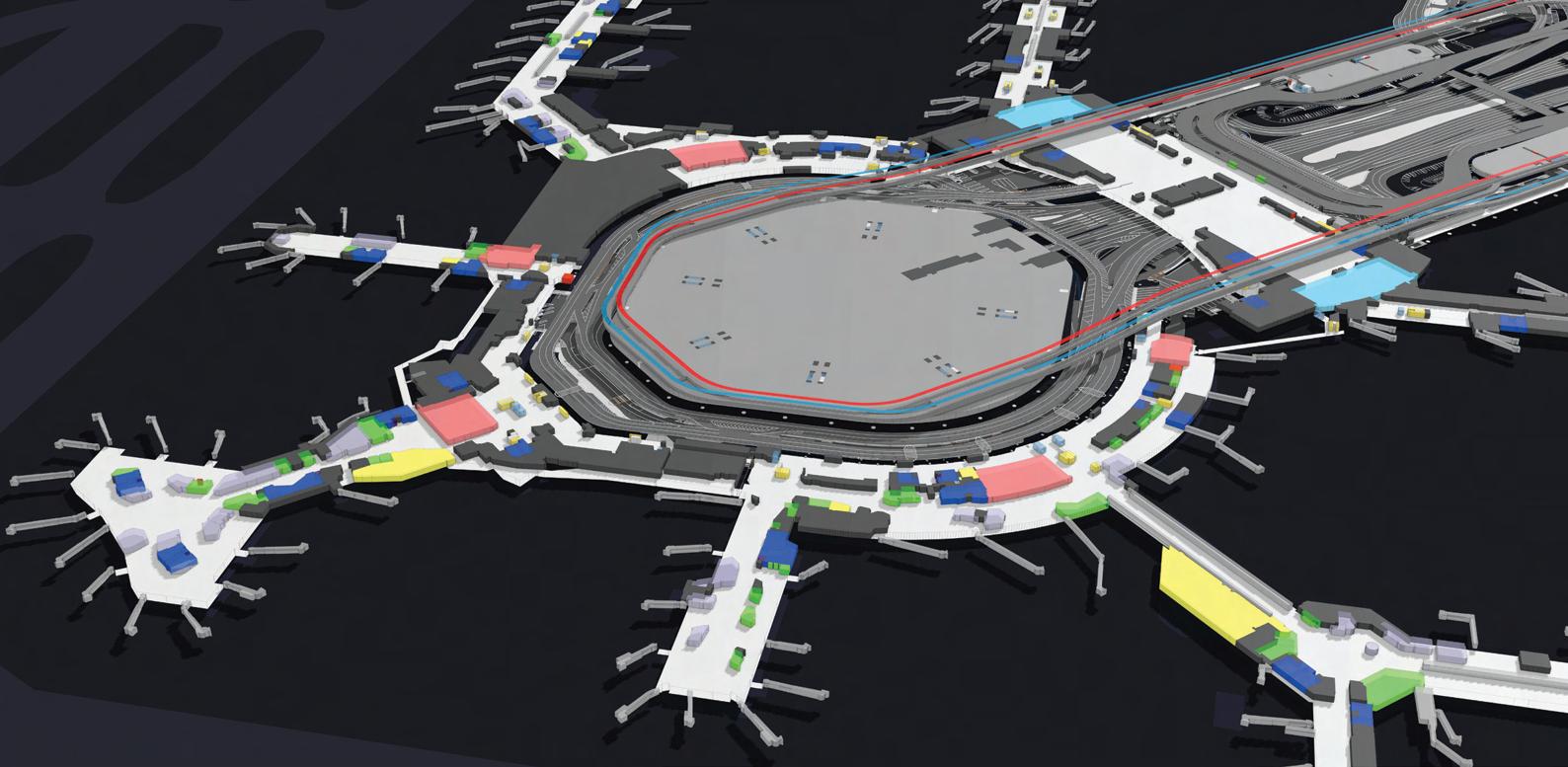
• Better design and manage the construction of new facilities.
• Better manage and maintain terminal and airside assets.
• Improve performance and efficiency.
• Enhance customer safety and experience.
• Optimize your financial performance.
Take the next step with Esri’s GIS. Explore go.esri.com/esri-airports-brochure-2022.